What’s the Best Compact SUV?


A lot can happen in two years, especially in a vehicle class as competitive as compact SUVs, which has become the heart of the American market. Since our last comparison in 2019, two of our competitors — the Hyundai Tucson and Nissan Rogue — have been fully redesigned and 2019’s winner, the Volkswagen Tiguan, has been updated. Did it make a difference? You bet it did.
In addition to a shakeup in the rankings, we saw the furtherance of some trends, including two unwelcome ones: the proliferation of touch-sensitive controls in lieu of mechanical buttons and needlessly firmer ride quality in what are essentially family haulers. And once again, the point spread between contestants in one of our comparison tests continued to shrink, to just 9.6% of the overall points between the top- and bottom-ranked finishers (in 2019, the spread was 13.1% for seven contestants).
All of this year’s vehicles were the highest trim levels offered, equipped with four-cylinder engines and all-wheel drive. The exact model years, trim levels and drivelines we tested and their final ranking were:
1. 2021 Nissan Rogue Platinum
2. 2022 Hyundai Tucson Limited
3. 2021 Subaru Forester Touring
4. 2022 Volkswagen Tiguan SEL R-Line
5. 2022 Mitsubishi Outlander SEL 2.5 S-AWC
6. 2021 Honda CR-V Touring
Note that both the Ford Escape and Toyota RAV4 were invited, but their brands declined. As always, our results apply specifically to the vehicles we tested as equipped and priced — not the entire model line. Careful shoppers will view our likes and dislikes below for each car and decide what matters most to them. The Good and Bad entries are arranged in descending order of their importance to the judges — Editor-in-Chief Jenni Newman, Managing Editor Joe Bruzek and News Editor Brian Normile — and their influence on the results.
Compact SUV Challenge
Results | Winner | How We Tested
All judging categories could earn a maximum of 30 points with the exception of value, which allows a maximum of 60 points. The following graphic shows all categories and the various wins and losses at a glance.

6. 2021 Honda CR-V Touring, 335 points (out of a possible 540)
The verdict: Last redesigned in 2017, the CR-V falls from fourth place in the previous ranking due as much to improvements among competitors as to its own flaws. It’s among the best-handling models, but it lags in family features, and its powertrain is more memorable for the bad reasons than the good.













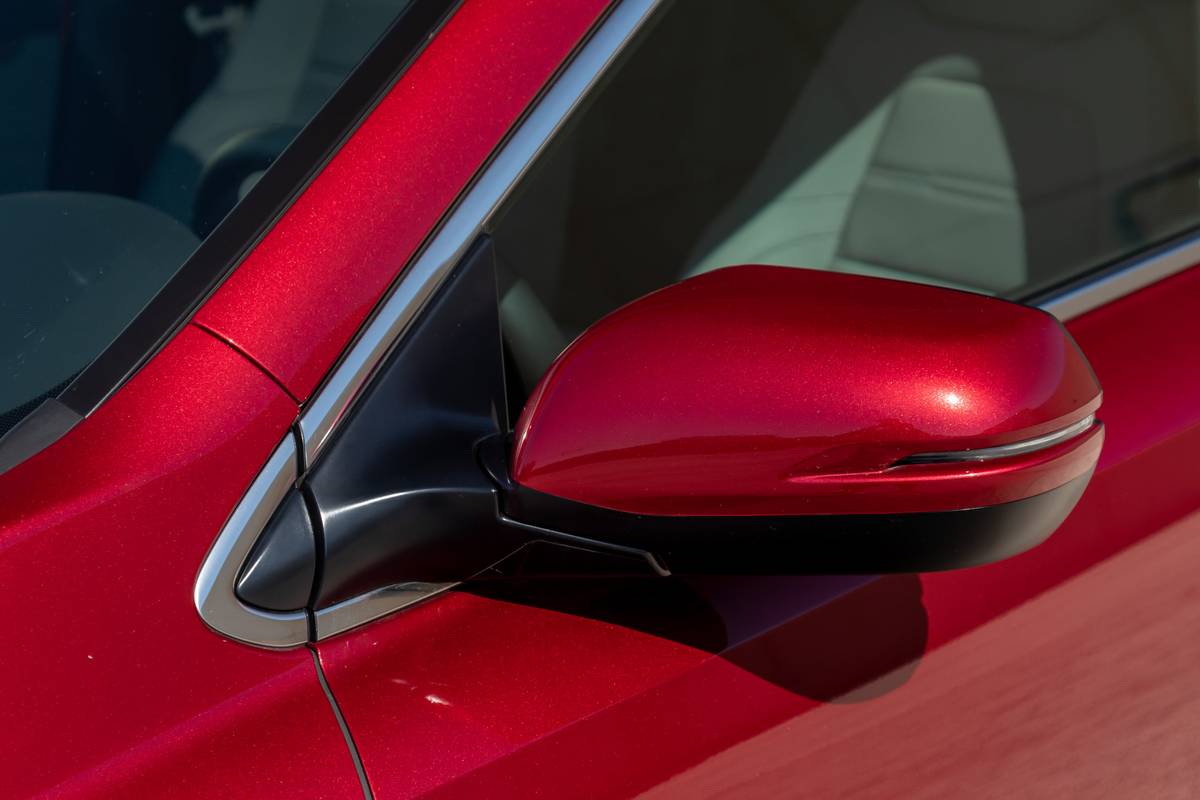



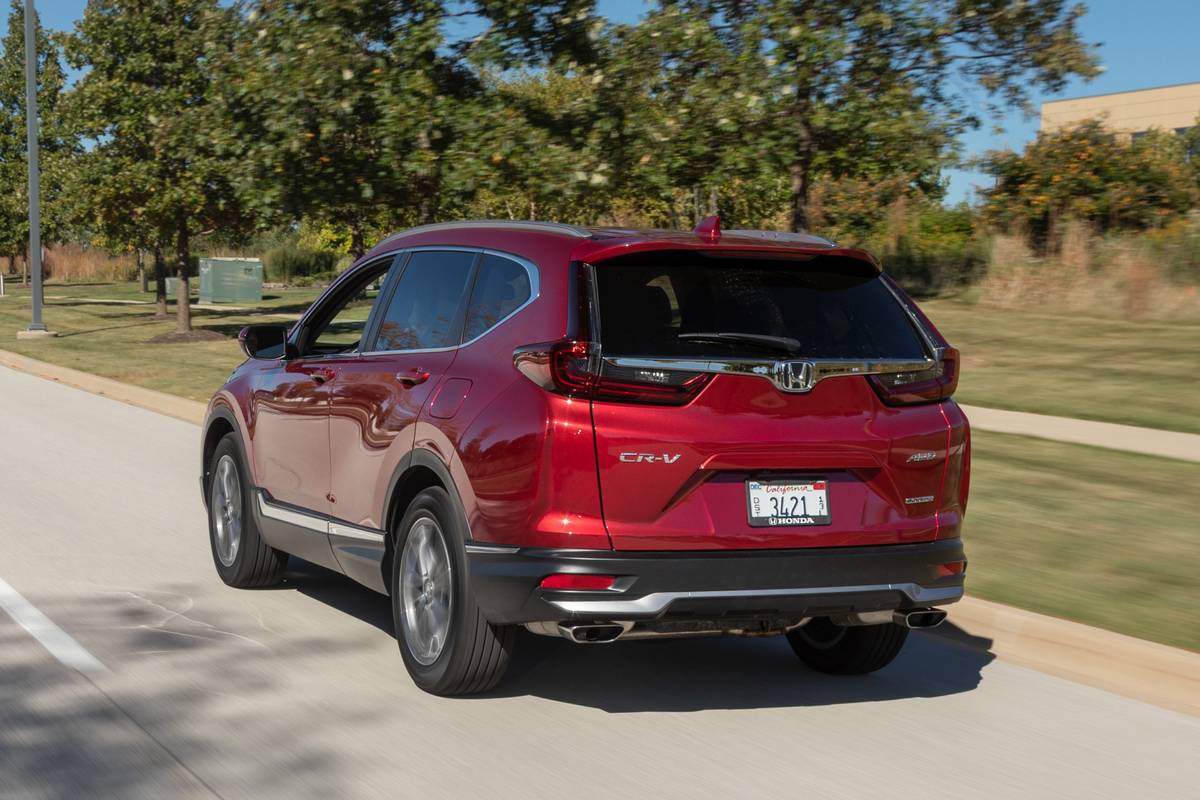















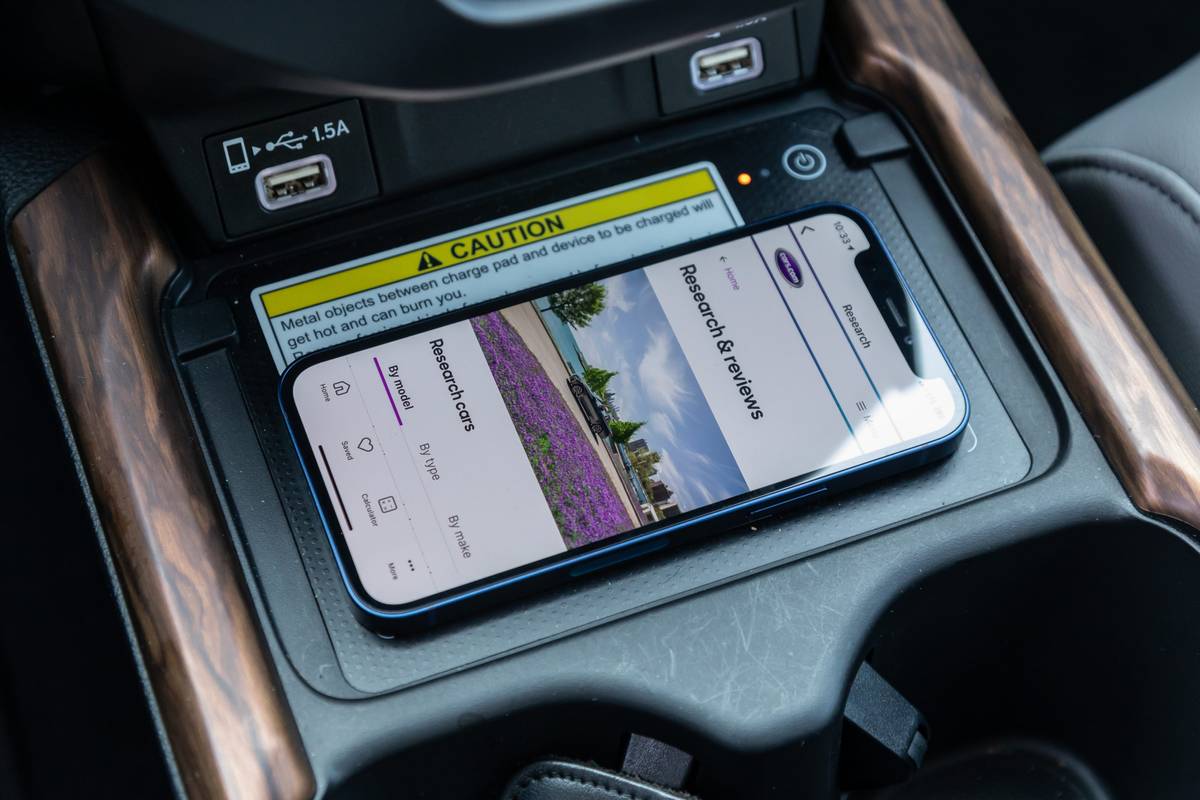

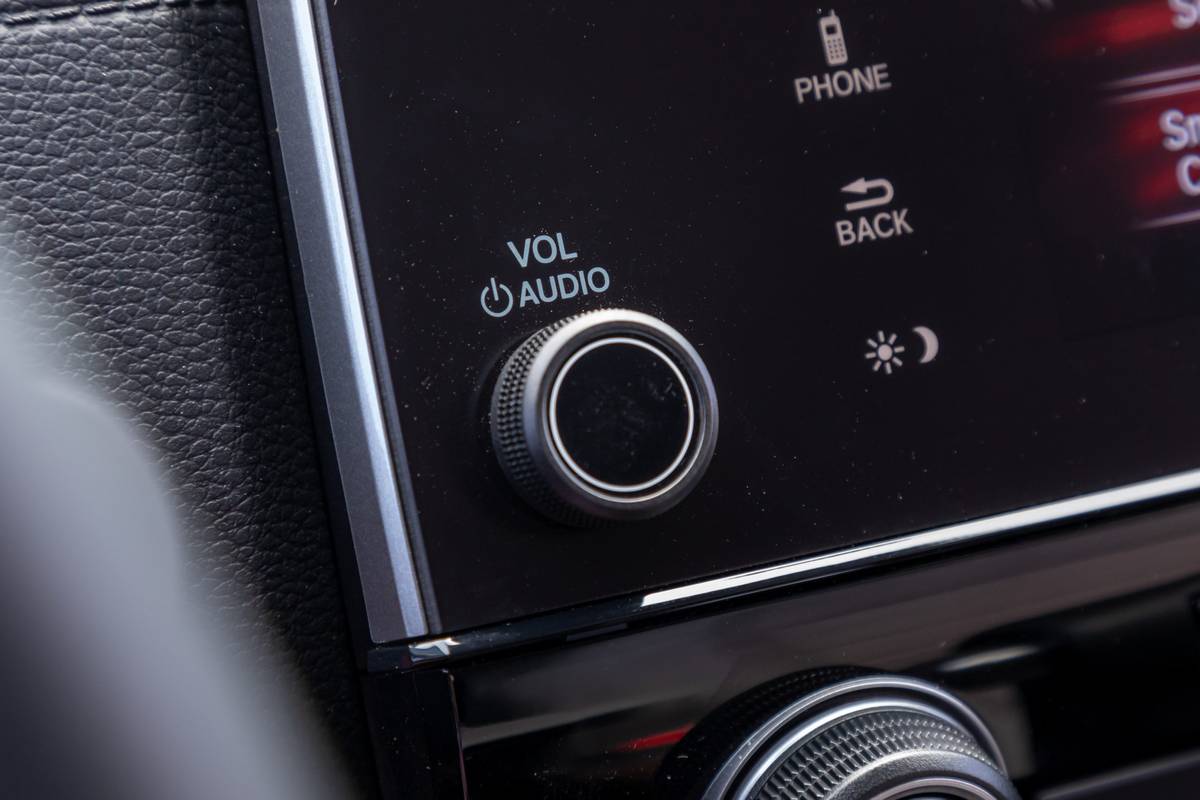

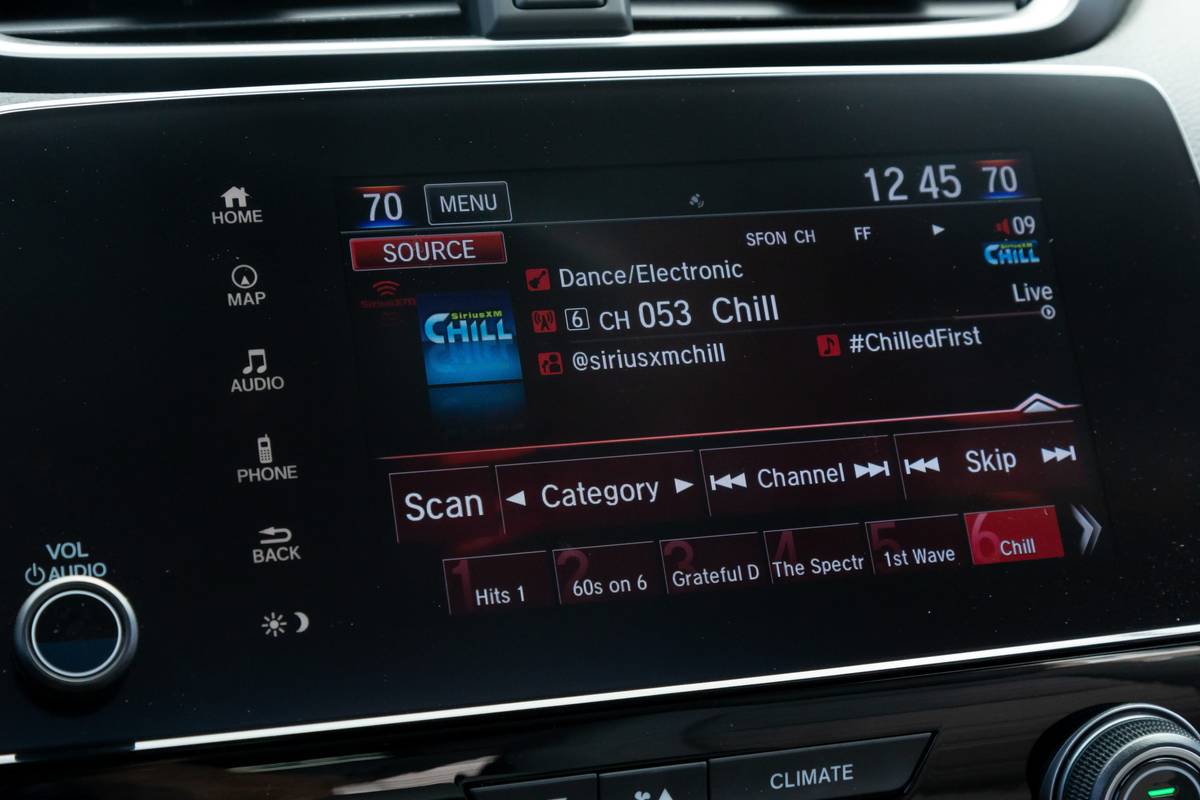



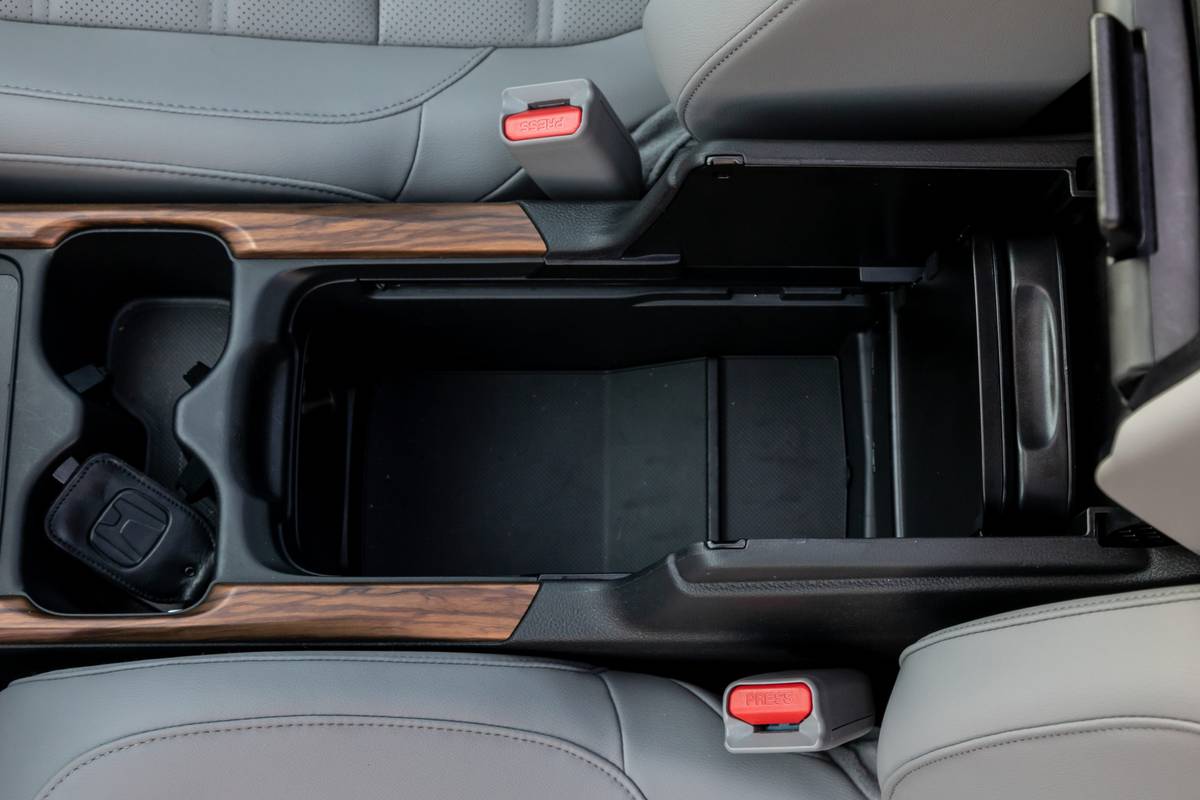






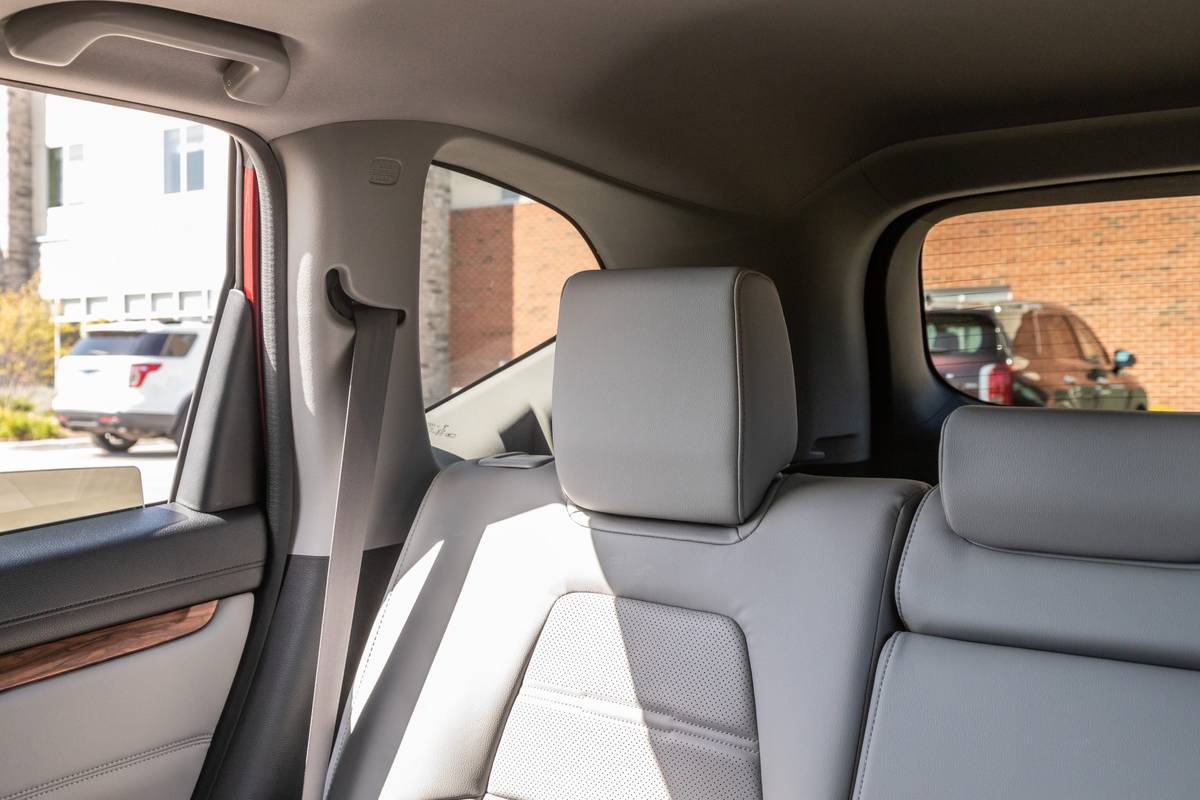



























































Our Test Vehicle
As-tested price: $36,775
Powertrain: 190-horsepower, turbocharged 1.5-liter four-cylinder; continuously variable automatic transmission; all-wheel drive
0-60 mph: 8.4 seconds, 1st place
0-10 mph: 1.2 seconds, 5th place
Estimated city/highway/combined mpg: 27/32/29
Ranked fourth overall in our previous Challenge and second in 2017, the CR-V is paying the price for not being overhauled, or at least substantially updated, quickly enough in this cutthroat vehicle class. That it’s just three points behind the fifth-place finisher, itself a model freshly redesigned for 2022, says as much about the fitness of this whole class as you need to know — but when major problems fall away, smaller ones begin to seem larger in the eyes of consumers. The CR-V ranked first in one judging category but last outright in four, and shared two additional category losses with other models in a tie.
The Good
Braking: Though we performed no instrumented stopping-distance tests, judges evaluated the contestants’ braking action and pedal feel, which the CR-V claimed as its sole judging category win. “Usually, there’s not enough of a difference in brake-pedal feel among pedestrian SUVs like this to call one significantly better than the other,” said Bruzek. “But there are some really mushy, confidence-sapping brake pedals in this test, like the Outlander’s and Rogue’s. The CR-V’s braking has the characteristics of control and feedback I appreciate in performance cars.”
In-cabin storage: Though Newman criticized wasted space between the center console’s sliding cover and armrest, the judges scored the CR-V just one point behind the winner in this category partly due to this console, which Bruzek described as “a huge compartment with lots of options for a variety of sized items. It’s deep, wide, and with multiple levels for storage of things big and small.” Normile noted, “The minivan-esque high-mounted gear selector is a lesson in using nontraditional gear selectors for a purpose: increasing front storage space.”
Ride quality?: Though it ranked dead last in this test category in 2019, the unchanged CR-V rated just above average in ride quality this time around. “That says more about industry trends,” Normile said. “The CR-V wasn’t the best in the bunch, but there’s far less impact harshness than in most of the competitors here.” Newman agreed: “There was some bounciness from the seams on a concrete roadway, but it handled a variety of roadways quite well,” she said. Even Bruzek, who deems the ride too firm, noted that “it solidly absorbs bumps without the suspension or body feeling clumsy or uncontrolled.”
Value: “Not necessarily in features for the money, but the fact that it has the highest EPA-rated mpg on regular gas and is also the quickest to 60 mph despite being slow off the line,” Bruzek said.
Powerful rear USB: “The two 2.5-amp USB charging ports for backseat passengers are welcome, even if it is confusing that the front ports, including the data port, are underpowered,” Normile said.
The Bad
Safety features: The CR-V ranked last in this category primarily because it lacked a 360-degree camera system and front parking sensors, which four contestants had, and for being the only model without rear automatic braking. Of these three features, only the front sensors are offered on the CR-V Hybrid Touring, so they weren’t available to our non-hybrid test vehicle.
Noise: “By far the noisiest SUV of the bunch due to its engine that drones on and on, and when it finally quiets a little, road noise takes the lead,” Newman said. “Is the engine in the passenger seat?!” Bruzek said. “It screams ‘Bwahhhhhhhhh!’ during acceleration, and it’s a coarse, hollow sound.”
User interface: “The touchscreen is noticeably outdated,” Newman said. “From the small size to the low resolution, this screen is like a time capsule back to 2017.” Bruzek agreed: “It also has speed and intuitiveness problems, jerky movements when moving from menu to menu and mostly touch-sensitive controls alongside the touchscreen.” Normile piled on: “You’ve given us a volume knob, Honda, and for that we thank you. But why is it positioned where I can mistake the driver’s temperature knob for it, and where is the tuning knob? Also, the instrument panel is angled strangely, making it unnecessarily harder to read.”
Apps and sources: The CR-V’s fourth last-place finish was in this category, partly for its lack of wireless Apple CarPlay and Android Auto. The wired versions are standard, but the fact that the front data ports for power-intensive apps top out at 1.5 amps didn’t help the Honda’s score.
Powertrain: “The way the CR-V stumbles when accelerating from a stop is deeply frustrating — not to mention potentially dangerous when trying to turn across traffic or cross a busy road — and negates any goodwill its overall quickness might’ve earned,” Normile said. You know there’s a problem when the model with the quickest time to 60 mph (8.39 seconds) ties for last place. Bruzek, who performed the testing, explained it: “It was third fastest to 30 mph, but fifth out of six to reach 10 mph. The lower the speed, the slower it responds.”
Low-speed lane centering: The driver-assistance features category was very close, but the CR-V and Tiguan both fell behind the pack because their lane-centering steering operates at high speeds but not low.
Research the 2021 Honda CR-V | Search Inventory | Car Seat Check
5. 2022 Mitsubishi Outlander SEL 2.5 S-AWC, 338 points
The verdict: Far better than its predecessor, the 2022 Outlander functions as a sort of discount-brand Nissan Rogue but falls short due to confusing design choices inside and out and, particularly, a standard third row that hurts more than it helps.




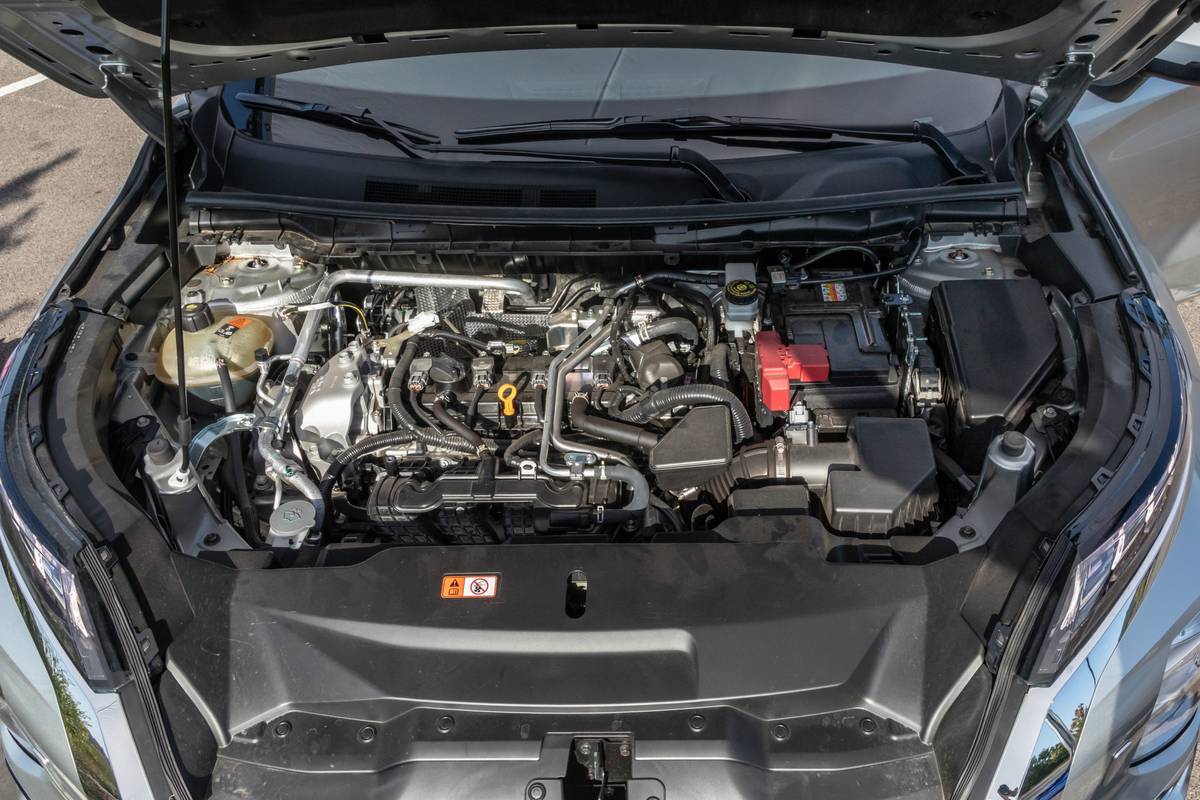





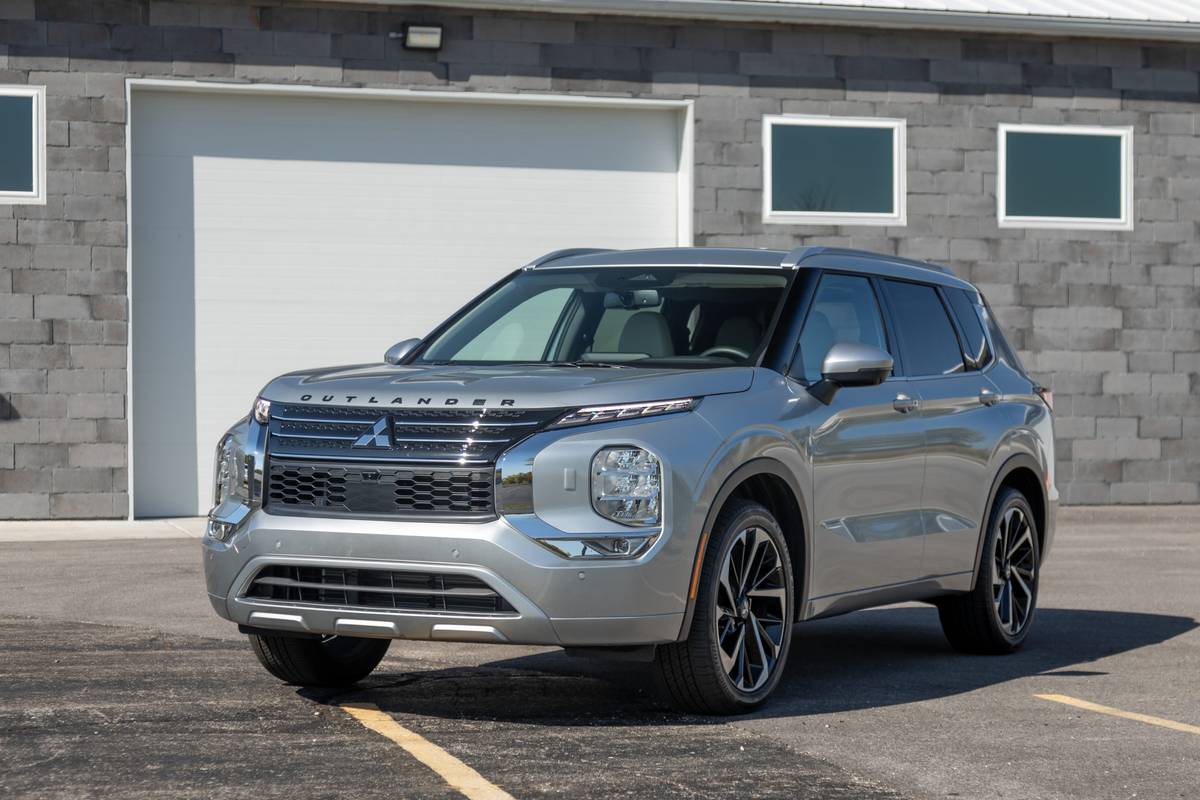

























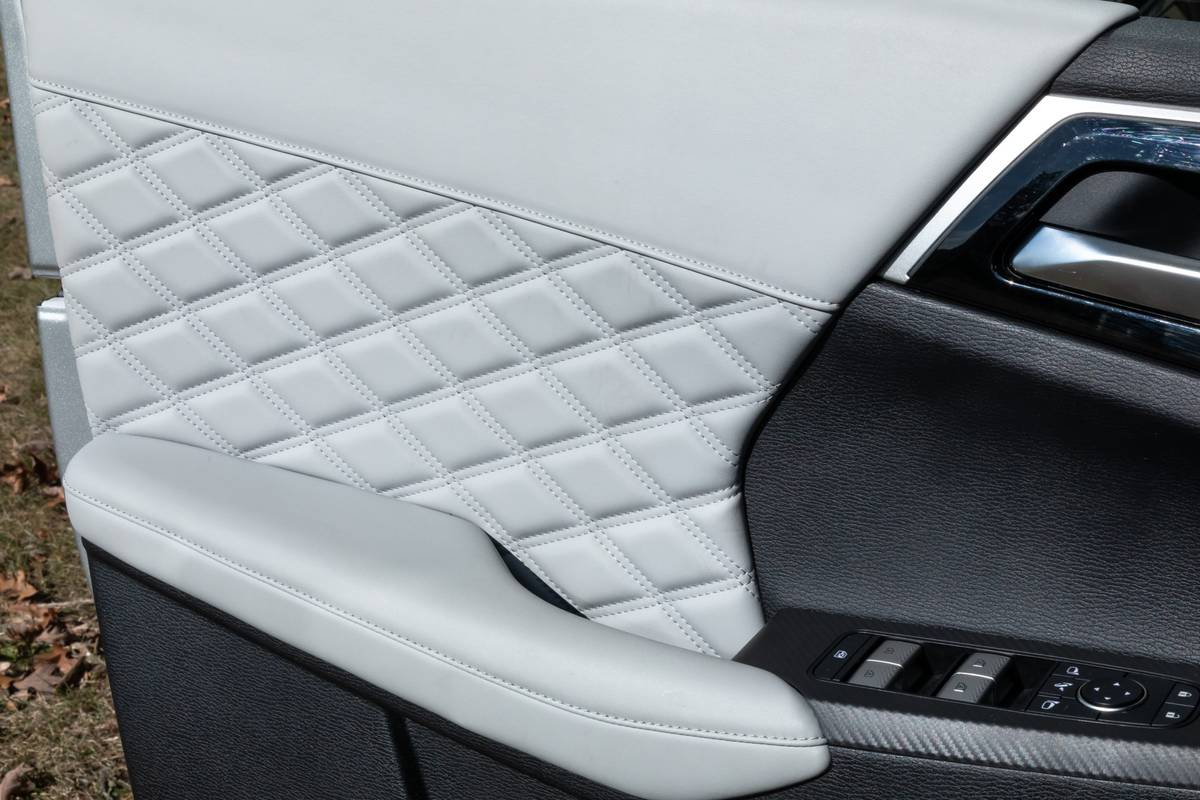





























































Our Test Vehicle
As-tested price: $35,295
Powertrain: 181-hp, 2.5-liter four-cylinder; continuously variable automatic transmission; all-wheel drive
0-60 mph: 9.1 seconds, 3rd place
0-10 mph: 1.0 second, 3rd place
Estimated city/highway/combined mpg: 24/30/26
The Mitsubishi Outlander has been an also-ran for many years, but with its 2022 redesign, it’s now a sibling of the Nissan Rogue, which is a good thing to be. We don’t make a habit of judging theoretical vehicles, but we suspect a Mitsubishi-built Outlander would have done less well in the judging than this Nissan clone. So, why the disparity in rank between this model and its sib? It seems to be the law of unintended consequences tied to the “free” third-row seat, which simultaneously adds little value while chipping away at multiple other category scores. The Outlander shared one four-way category win in driver-assist technology but lost seven and shared an eighth loss.
The Good
User interface: “There’s nothing to ‘get used to’ behind the wheel of the Outlander,” Bruzek said. “The heating and air-conditioning controls look flush like touch-sensitive panels, but they’re real buttons — a big plus. The main screen is of high quality, as is the instrument panel with bright, easy-to-read gauges.” Normile added, “One area where the Outlander surpasses the Rogue is with easy-to-use volume and tuning knobs. The Rogue’s are much more flush, and I worry they’d be harder to grab with gloves on. The Outlander’s are pleasantly large and textured. Rear passengers get climate controls, a feature otherwise found only in the Rogue.”
USB-A and -C ports: “Like the Rogue, the Outlander has the smartest (for the moment, anyway) inclusion of both USB-A and -C ports, so no matter what device you carry, the Outlander has what you need without requiring any adapters,” Bruzek said.
Interior quality: “The Outlander and Rogue have similar diamond-quilted leather seating and trim in the first and second rows,” Newman said. “It looks luxurious.” Bruzek added, “It’s not a home run because the buttons and gear selector are rickety and flimsy, but the overall quality is a step above the others in this test, especially with nice little touches like the stylized trim rings on the volume and tuning knobs. Everything that’s soft is super-soft.”
Value: “It’s tough not to compare the Outlander to the Rogue, and while the Rogue does most everything a little better, a lower as-tested price for a very similar vehicle merits consideration,” Normile said.
Acceleration: “While the engine is loud, it accelerates quickly, allowing for quick lane changes on the highway or scooting across four-lanes of traffic,” Newman said. Normile also found the normally aspirated four-cylinder’s power “adequate, despite the Outlander’s heft.”
The Bad
First- and second-row seats: “The seats — especially the front passenger seat — seem a little flat in the middle portion,” Newman said. “And while I liked the leather seats and trim in the cabin, the hard plastic on the doors felt cheap (and hollow).”
Third-row seat: “Second-row passengers need to slide their bench seat forward to create legroom for the third row,” Newman said. “When I did this, my knees pushed into the driver’s seat, which was positioned for me at 5-foot-7.” Bruzek added, “Just saying ‘It’s only for kids’ isn’t good enough. No third-row tethers, no third-row Latch anchors and no legroom. What kid can actually fit back there? By the time they outgrow their car seats, they won’t have any legroom.” In addition to failing in its purpose, the third row hurt the Outlander’s scores in many other categories.
Handling: “Its extra weight compared with the Rogue is most evident in its handling, where it’s slower to react to inputs,” Bruzek said.
Visibility: “Traditional visibility in the Outlander was among the worst,” Normile said. “The hood sits high, hampering the forward view, and in back, the comically large third-row head restraints block all but a small window. Remove those, and the second-row head restraints still intrude.” Complicating matters, Bruzek said, “The third-row head restraints don’t even fold down. You have to manually remove and stow them.”
In-cabin storage: “Despite the Rogue-like interior, the center console design reduces storage space up front for seemingly no reason,” Normile said. Newman agreed: “I also was annoyed by the wasted space in the center console area. Storage in the third row is limited to just a cupholder in each side wall.”
Child-seat fitment: The Outlander ranked last in our tests of how well it accommodated child-safety seats because the second row’s frustrating seat belt buckles that sink into the bottom seat cushion when trying to use them. Digging the buckles out of the seat cushion was a pain. Parents will need to dig around to find the top tether anchors, which are behind slits in the seatback upholstery. The third row doesn’t have any lower Latch or top tether anchors, so we were only able to install a booster seat, which fit fine, though legroom could be an issue.
Ride quality: “There’s lots of impact harshness over bumps and imperfections,” Normile said. “There’s just no reason for a Mitsubishi Outlander to have such a firm suspension, especially without a handling payoff.” Bruzek added, “The body is uncontrolled over large bumps as it doesn’t remain stable over broken pavement.”
Research the 2022 Mitsubishi Outlander | Search Inventory | Car Seat Check
4. 2022 Volkswagen Tiguan SEL R-Line, 358 points
The verdict: The field may have gained ground, but the Tiguan also owes its fall to “upgrading” former strengths like no-nonsense controls and unflinching accelerator response with the opposite rather than addressing lackluster interior quality. Fortunately, assets like cabin and cargo roominess remain.




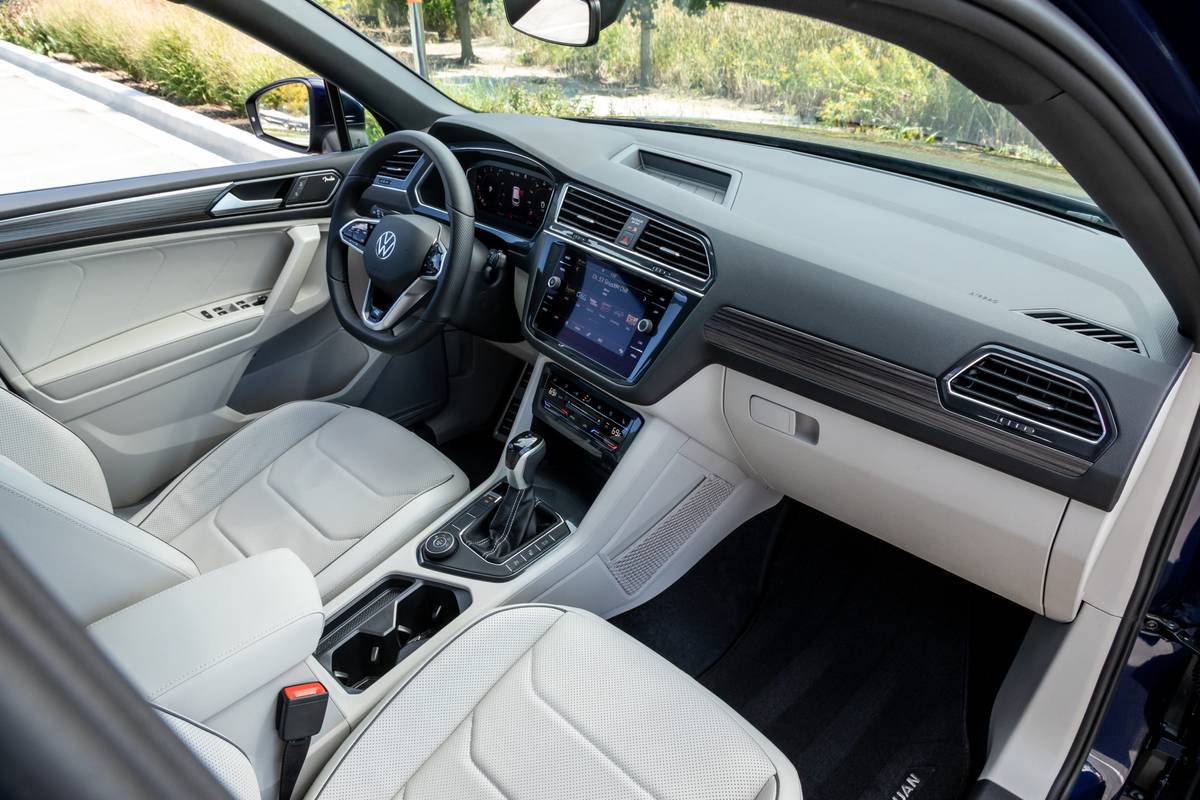



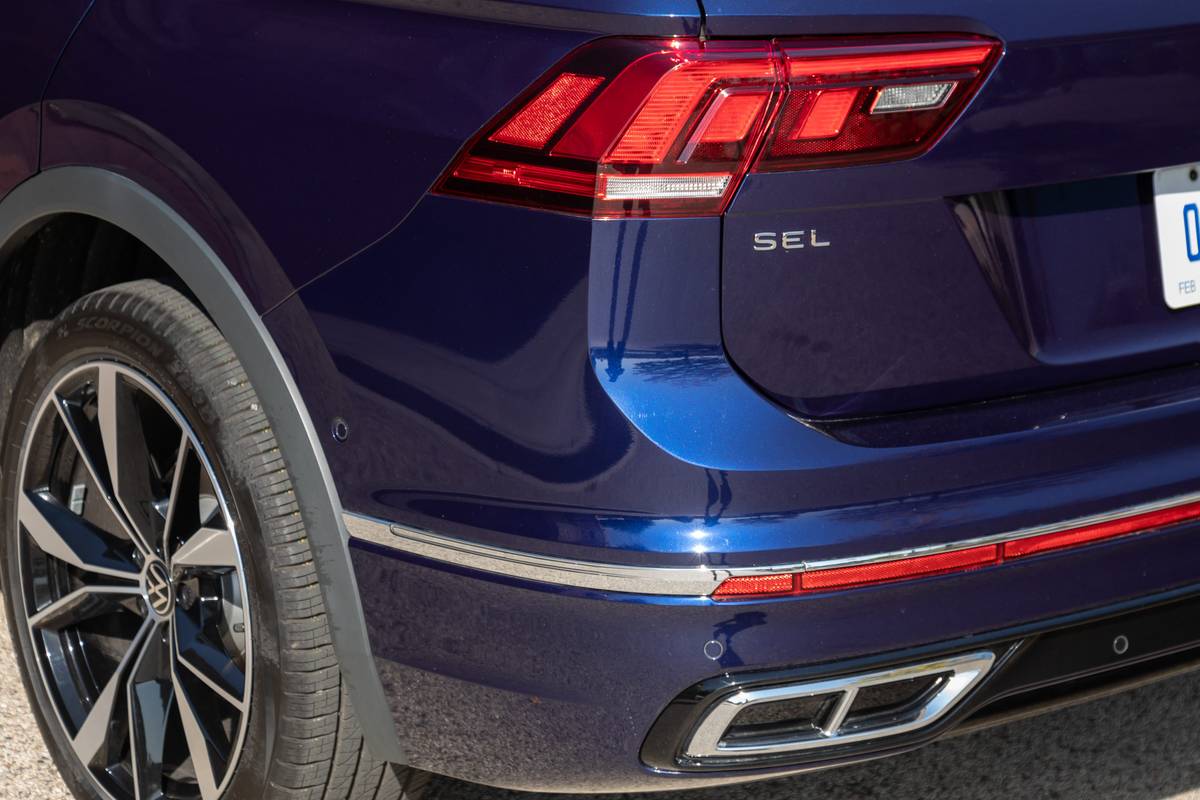





















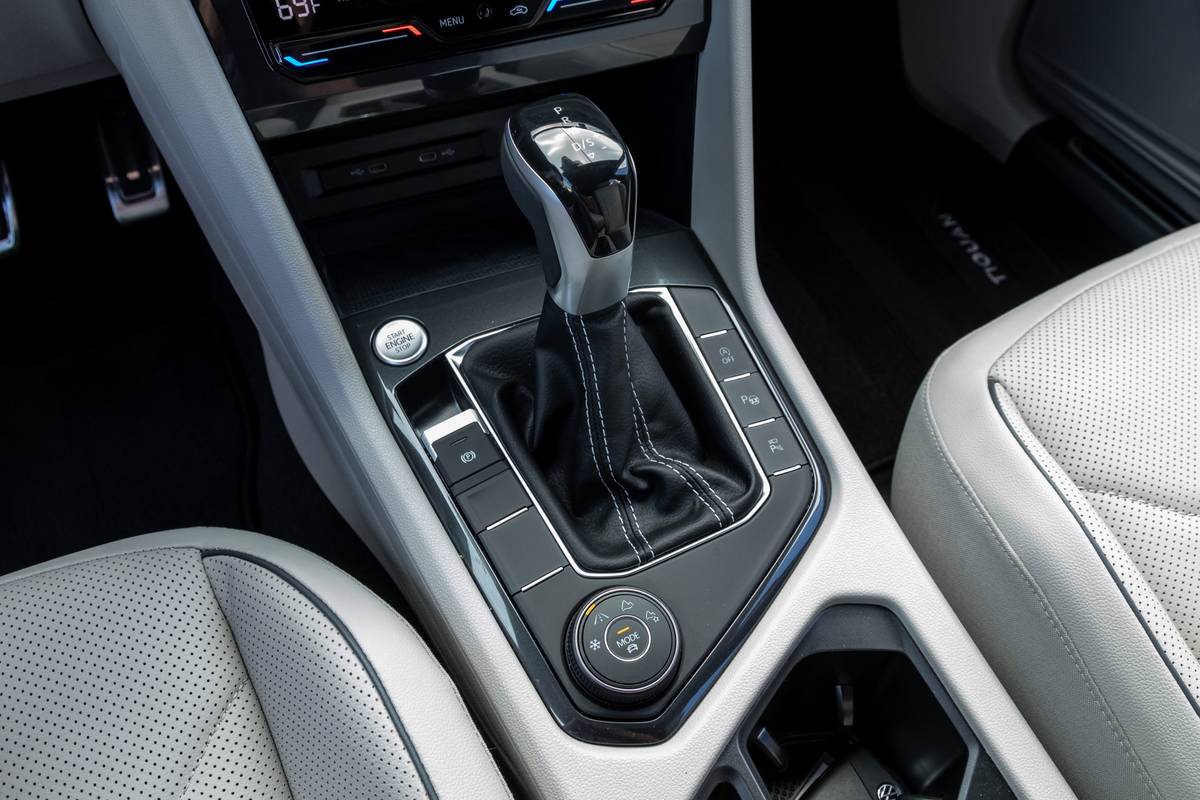










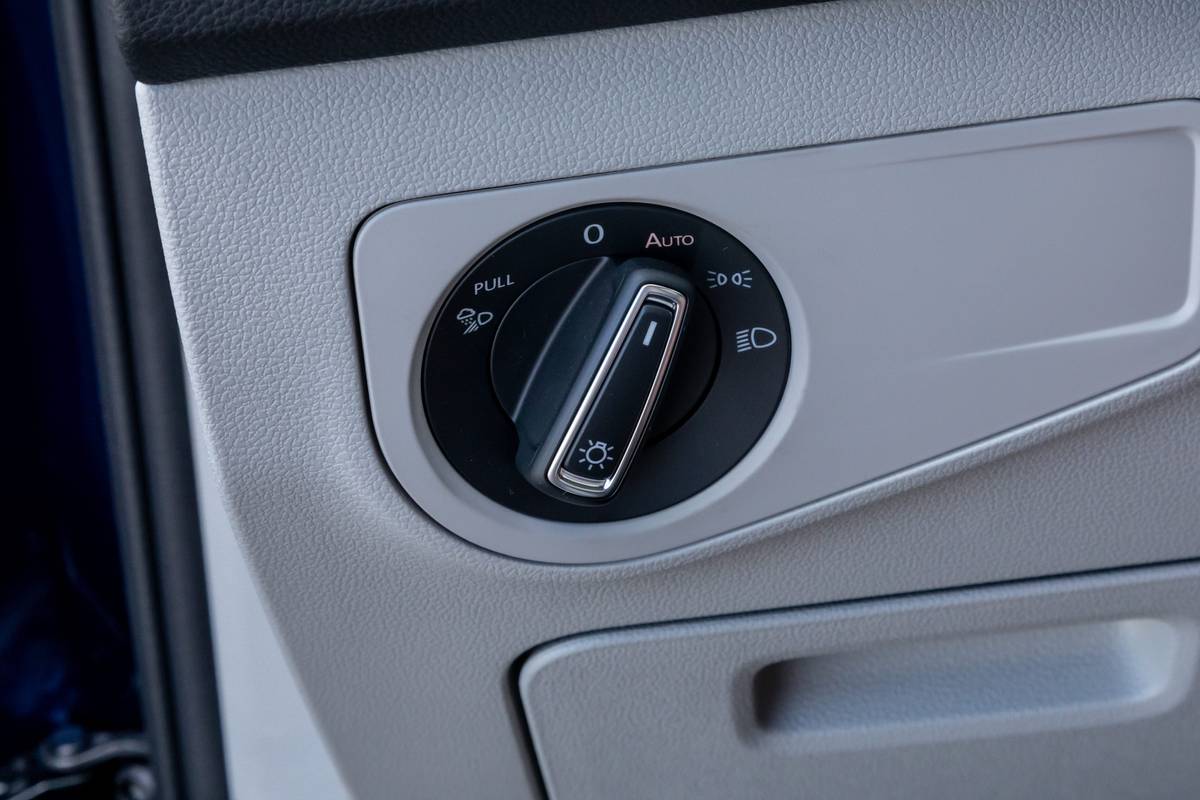

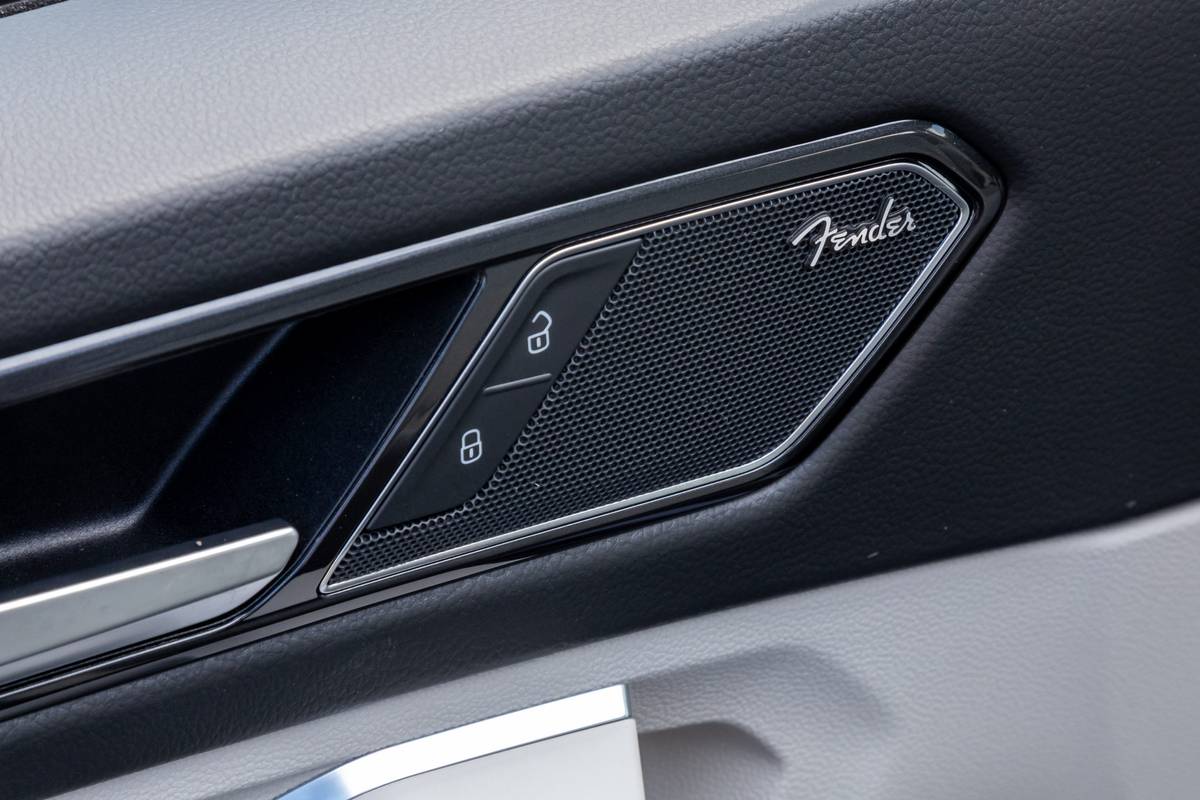


















































Our Test Vehicle
As-tested price: $37,790
Powertrain: 184-hp, turbocharged 2.0-liter four-cylinder; eight-speed automatic transmission; all-wheel drive
0-60 mph: 9.7 seconds, 6th place
0-10 mph: 1.5 seconds, 6th place
Estimated city/highway/combined mpg: 21/28/24
What happened?! The fact that the Tiguan placed a healthy 20 points above the fifth-place finisher is overshadowed by the fact that it took the top prize in our previous two contests and has fallen so far. The details are all below, but it seems to be a case of an automaker fixing what wasn’t broken and ignoring what was — exacerbated by the fact that the R-Line trim level has 20-inch wheels with a curiously high inflation specification of 46 psi, and also knocks 1 mpg off the EPA’s city, highway and combined ratings versus the Tiguan’s other AWD trim levels. And though it has its pluses, the drivetrain behavior has definitely taken a turn. The Tiguan won three categories, tied in a fourth and lost four.
The Good
Handling: “The best ranked in the test,” Bruzek said. “It’s eager to turn in and grip around a corner, which is surprising considering it’s the heaviest in the test. There are little squeals from the tires, but they don’t lose grip. Mid-corner, it hunches over on the nose and rotates through the turn like a much sportier vehicle than a compact SUV.” Normile agreed: “It’s definitely the most confident-handling SUV of the lot, though it doesn’t feel like the Tiguan’s limit far exceeds its more sedate competition.”
Cargo: The Tiguan took first place in this category with cargo volume behind the third row of 20.3 cubic feet, shy of the 21.5 cubic feet of the Honda and Hyundai but bolstered by amenities those models lack, such as a sliding second row with a 40/20/40-split backrest and a deep cargo floor (75 inches), which we measure from the liftgate to the rear of the center console.
Safety features: The Tiguan ranked first in the accounting of safety features by including almost everything on the menu: forward collision warning with automatic emergency braking at both low and higher speeds, pedestrian detection, lane departure warning with steering or braking intervention, a blind spot warning system, a 360-degree camera system, rear cross-traffic alert, front parking sensors, reverse automatic braking, automatic high-beams and curve-adaptive (pivoting) headlights. Only blind spot cameras, which the Tucson included, were missing, but no other contestant logged as many points.
Child-seat fitment: The Tiguan tied for first in our tests of how well it accommodated child-safety seats because it has a roomy backseat that easily accommodated our space-hogging rear car seats. The lower Latch anchors and top tethers are easy to find and use, and the rear seat belt buckles sit on stable bases that make quick work of buckling up for little ones.
Powertrain: “Once the Tiguan was moving, it felt zippy, responding quickly to accelerator pressure (but first you had to get it moving, which was not a highlight),” Newman said. Bruzek added, “It’s very, very slow to start, and I don’t recall the Tiguan being this lazy off the line. The lights are out and no one is home until 2,500 rpm, when it takes off. The quickest car we tested at certain low-speed intervals was literally traveling twice as fast as the Tiguan. While moving, though, it has adequate acceleration otherwise, which makes me think it’s a programming change versus a mechanical hindrance, especially because previous Tiguans didn’t drive like this.”
Visibility: “The Tiguan offers tall, upright glass and good views to the front and over the shoulder while driving,” Bruzek said. “There’s decent visibility from the 360-degree backup camera system, though not class-leading, and there are front parking sensors to help.”
The Bad
Interior quality: “The Tiguan’s interior looks good, but settle in and the padding seems thin in places, including the seats, and there’s too much hard plastic across the cabin,” Newman said.
Ride quality: “The Tiguan SEL R-Line’s 20-inch wheels seemed to suck all the fun out of driving it,” Newman said. “I felt every crack in the pavement when driving on a variety of roads. It was exhausting.” Normile agreed: “It’s noisy and harsh, and I found the ride busy over concrete highway sections where it felt like the tires were tramlining.” Bruzek was more charitable toward the ride itself, deeming it “firm but well controlled,” and laid all the blame on noise from the tires and their 46-psi inflation spec: “The tire impact noise is what really drives this score down. It makes the car feel like it rides harsher and cheaper than it really does. You’re always hearing something, like you’re rolling on four overinflated kickball tires: Thwank, thwank, bonk.”
Low-speed lane centering: The driver-assistance features category was very close, but the Tiguan and Honda CR-V both fell behind the pack because their lane-centering steering operates at high speeds but not low.
Value: While this category lacked its usual runaway winner, it had a clear loser in the Tiguan. “Fuel economy is up 1 mpg versus 2021, but it’s the worst in the test and poor for the class at an EPA-estimated 24 mpg combined,” Bruzek said. “Plus, premium fuel is needed for its rated power. Add to that a combined warranty of four years/50,000 miles, which is better than average but lower than when we tested it in 2019 — and lower than the Hyundai and Mitsubishi. I’d want the expensive powertrain stuff warrantied longer.”
User interface: Rated just one point above the last-place CR-V, the Tiguan’s usability drew endless ire from judges, mainly because they preferred the older controls to this vehicle “upgraded” with touch-sensitive versions as the most significant change for 2022. “The redesigned steering-wheel controls just feel dumb,” Normile said. “What was wrong with traditional buttons? I spent most of my time in the Tiguan thinking it wasn’t as annoying as expected, and then I activated the three-stage heated steering wheel by accident when cornering. And controls that are either swipe or press? Not helpful. The same goes for the climate controls. It sure does look cool, but I sure did hate using it every single time.” Bruzek agreed: “I don’t think it offers any usability advantages compared with the old layout. You do get feedback from the steering wheel, but it takes more pressure than you’d expect to use. On the plus side, there’s still a volume and tuning knob.”
Research the 2022 Volkswagen Tiguan | Search Inventory | Car Seat Check
3. 2021 Subaru Forester Touring, 366 points
The verdict: The Forester both gives and takes. It gives with a comfortable ride, great visibility and — in the Touring trim — a surprisingly luxurious interior, but it takes back with distracting engine noise and needlessly complex ergonomics.

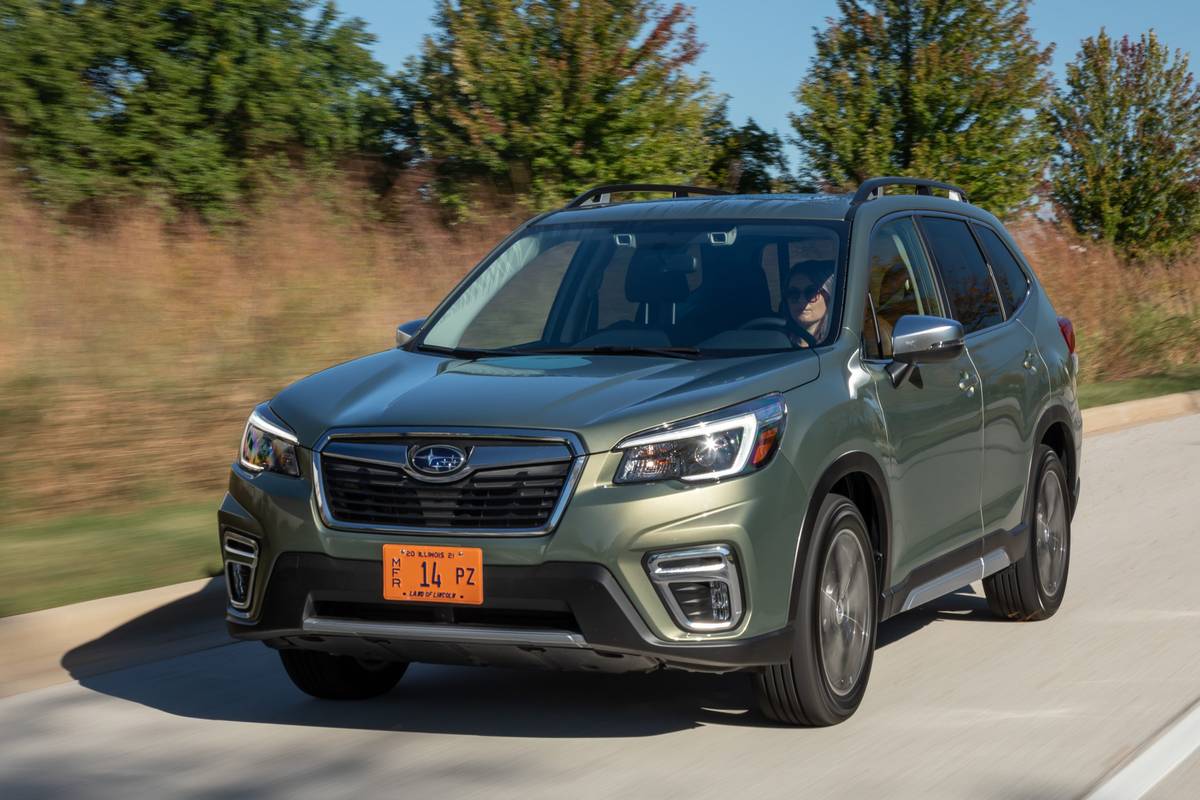

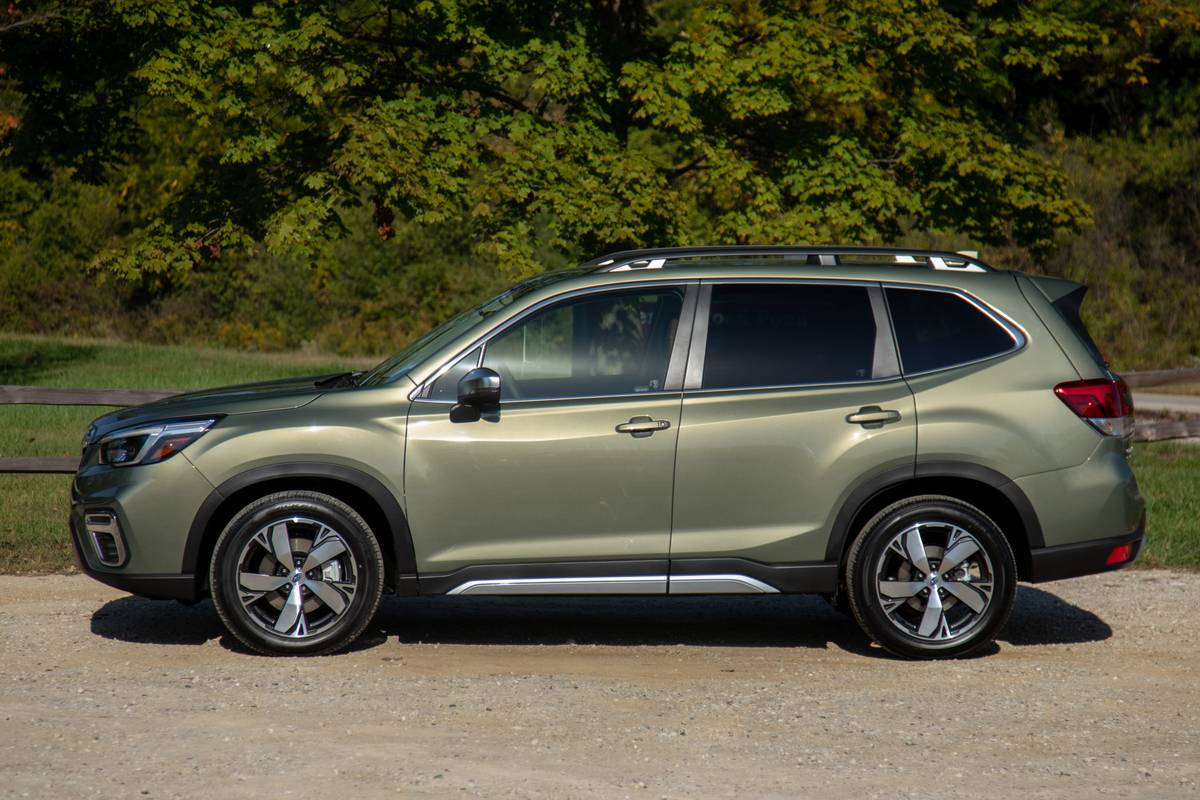



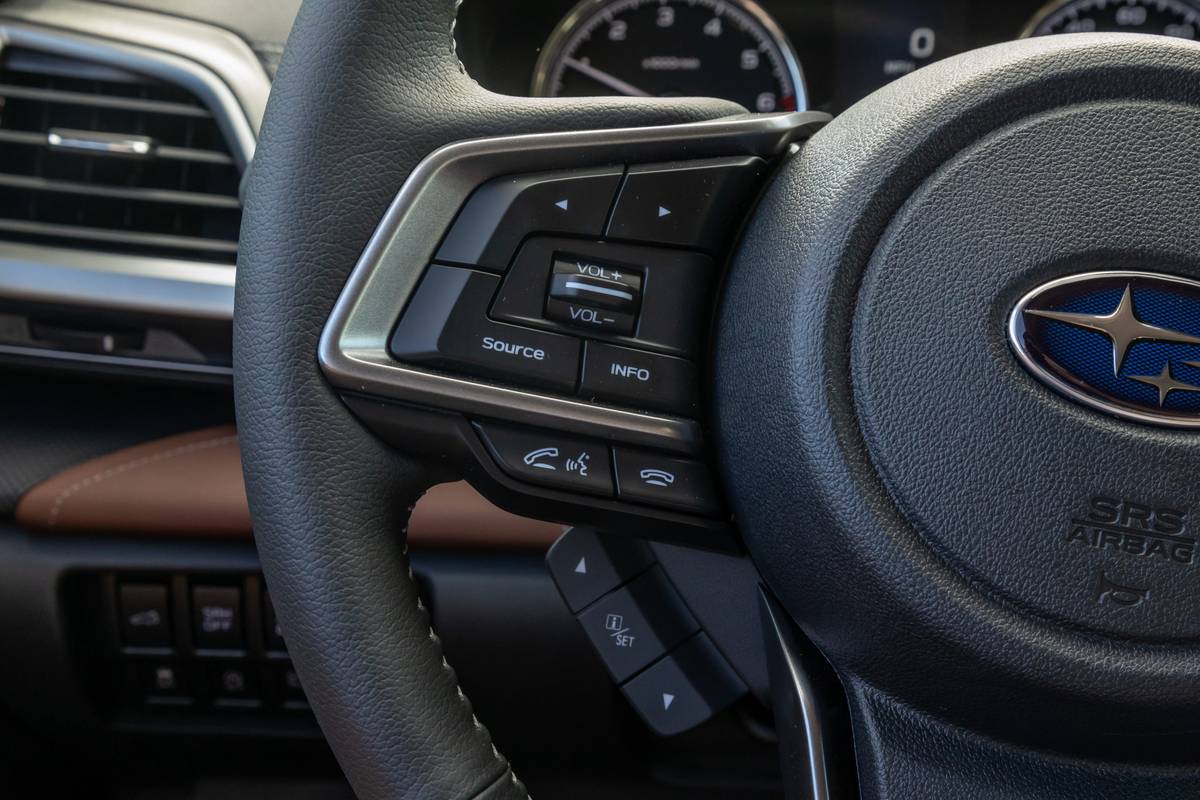




































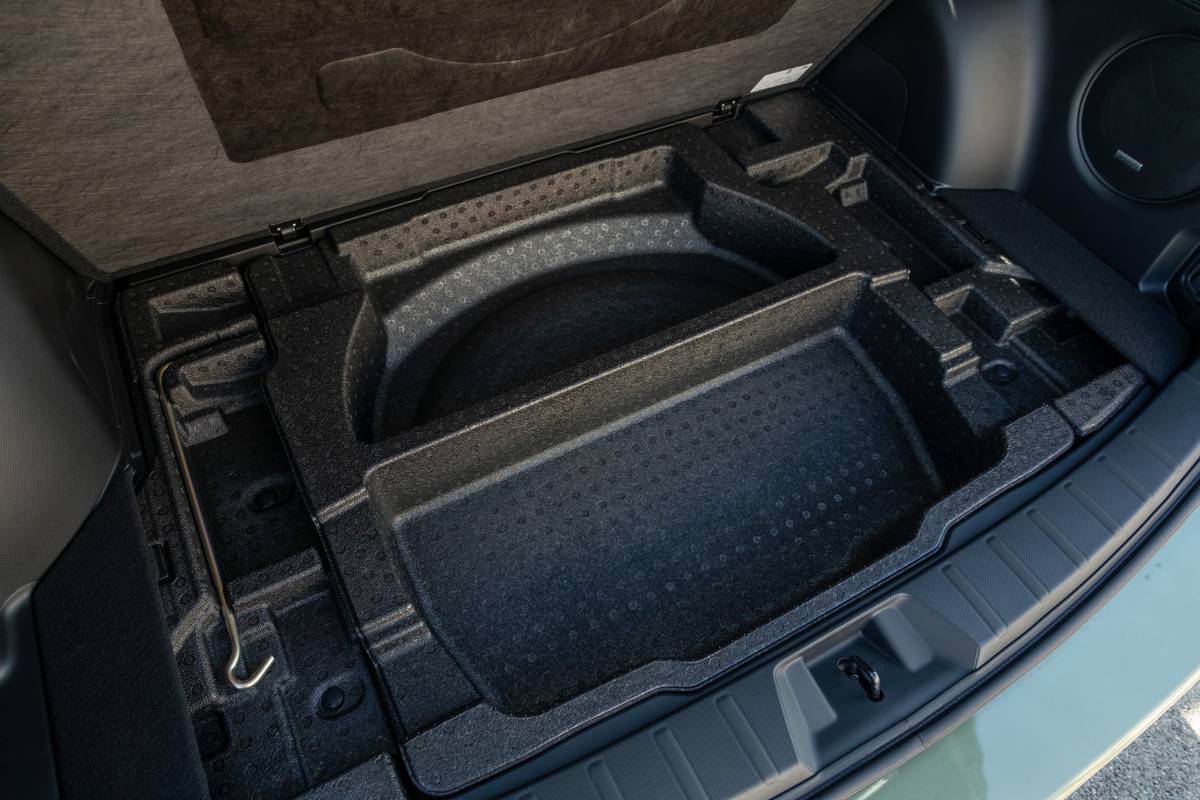















































Our Test Vehicle
As-tested price: $35,945
Powertrain: 182-hp, 2.5-liter four-cylinder; continuously variable automatic transmission; all-wheel drive
0-60 mph: 9.6 seconds, 5th place
0-10 mph: 1.1 seconds, 4th place
Estimated city/highway/combined mpg: 26/33/29
Freshly redesigned as of the 2019 competition, the Forester has slipped as aging models often do in this competitive arena, but by only one position. It bucks one trend in a good way by keeping ride quality comfortable, but remains in another trend with a disappointing user interface. The Forester won two judging categories, tied for first in two others and lost only one.
The Good
Visibility: “An upright front windshield and extra glass behind the A-pillars help keep everything in sight,” Normile said. The Forester’s organically good sightlines earned it the highest score in this category even without the crutches on which some models rely, Bruzek noted: “Its backup camera resolution is subpar for a class that has high-quality 360-degree camera systems and front parking sensors, both of which our Forester lacked.”
Interior quality: “I didn’t expect a luxurious interior in this test, but I really wasn’t expecting one from the Forester,” Normile said. “And yet! High-quality materials, good padding, and it hardly diminishes in the backseat.” Newman added, “The saddle-brown interior wrapped front and rear occupants in comfy seats and well-padded touchpoints.”
Ride quality: “The Forester is one of the softest-riding cars in this test,” Bruzek said. “The suspension doesn’t crash over large bumps, and body movements are controlled well when the road gets rough. It’s not thrown into a tizzy by large impacts like the Rogue and Outlander.” Normile agreed: “It was the standout in ride quality for me. Whether that’s because of its 18-inch wheels in a sea of 19s or larger, or Subaru’s usual comfortable suspension tuning, I don’t care. The Forester is placid without being overly soft over bumps, and it never beats you up.”
Backseat: Bruzek called the Forester’s second-ranked backseat “spacious, wide and far back from the front seats. The backseat cushion is flat with no center hump, so the middle seat is more usable than in competitors like the CR-V that have a raised center seat. However, at 6 feet tall with height in my legs, the top of my hair brushed the ceiling — something I didn’t experience in any other SUV’s backseat.”
In-cabin storage: The standout for Newman, a mom of two, was the rear seatback pockets. “They aren’t just one giant catch-all. Instead, there are three pockets of different sizes, giving rear passengers lots of options for stashing their stuff.”
Child-seat fitment: Though it received one B score out of A’s in our Car Seat Check because the front passenger seat had to be moved forward to accommodate the rear-facing convertible seat, the Forester ranked above average in this category thanks to its overall performance and for having an extra Latch anchor in the center for flexibility.
The Bad
Cargo: The Forester’s one category loss comes partly from its smaller size and resulting lowest measured cargo volume behind the backseat (18.2 cubic feet by our method). But with the roomiest measuring 21.5 cubic feet, the difference isn’t dramatic. The Forester was also the only contestant with a power liftgate that lacked a hands-free feature, and some other models added amenities that pushed their scores higher, such as a sliding backseat adjustment and 40/20/40-split versatility.
Noise: “The Forester is noisy due to the droning of its CVT,” Normile said. Newman agreed: “To my ears, the CR-V is the loudest in this test, but the Forester’s powertrain gives it a serious run.” Bruzek added that “with the constant whipping of wind noise, it’s not a pleasant car to drive long distances.”
User interface: “The Forester’s user interface is overly complicated,” Newman said. “It uses a dual-screen system, but the top screen often mirrors the information in the main screen or has info that seems unnecessary. The driver’s info center between the tachometer and speedometer is so crammed with info that there’s no way to glean anything useful from it.” Bruzek noted, “The menu structure and tiles are not very intuitive, and items are buried two or three menus deep. The steering wheel is overloaded with buttons and functions to the point of being overwhelming. Drive mode settings don’t need to be on the steering wheel of non-sports cars, and the separate trip computer screen on the top of the dash doesn’t prove useful enough to justify its existence.” Normile added, “The touchscreen is also positioned at an angle that makes it easy for its control labels to get washed out in direct sunlight. Less piano-black trim might’ve helped here.”
Front seats: “While covered in nice materials with soft cushioning, these seats didn’t fit my body very well, or my body didn’t fit the seats,” Bruzek said. “The cushions are flat and wide without much contour, like a padded folding chair, and had trouble keeping me in place. Plus, there wasn’t much room for resting my left foot.” Normile added, “It didn’t let me spread my legs much, and the knee padding on the center console was lower than where my knee hit.”
Value: “Though it ties for best combined gas mileage and has heated rear seats, little else stands out,” Bruzek said. “Average warranty, basic equipment for the money, and no surprise-and-delight features. Plus, the free maintenance isn’t included for all states. The moonroof that used to be an advantage now just seems meh in the world of large panoramic moonroofs.”
Research the 2021 Subaru Forester | Search Inventory | Car Seat Check
2. 2022 Hyundai Tucson Limited, 383 points
The verdict: The Hyundai Tucson is close to nailing the formula for compact SUV perfection, but its touch-sensitive center controls, less dominant value and some minor foibles cost it the prize.


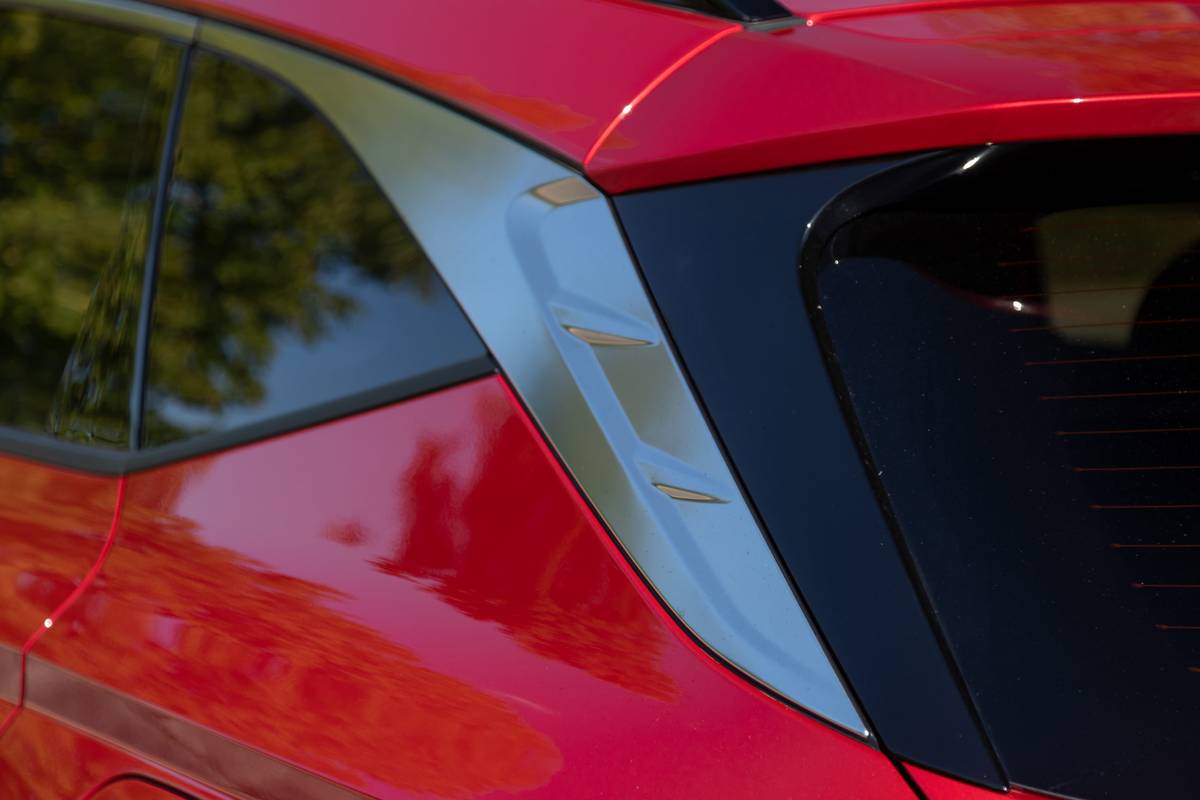






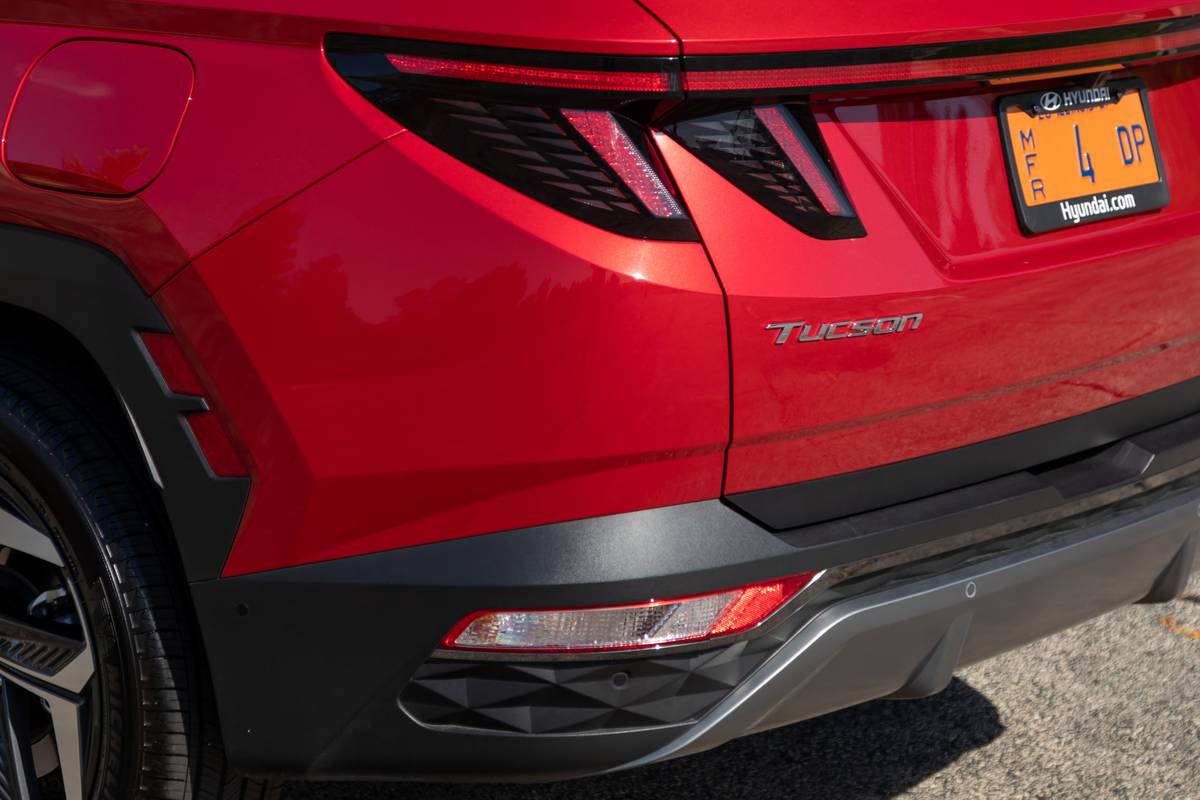
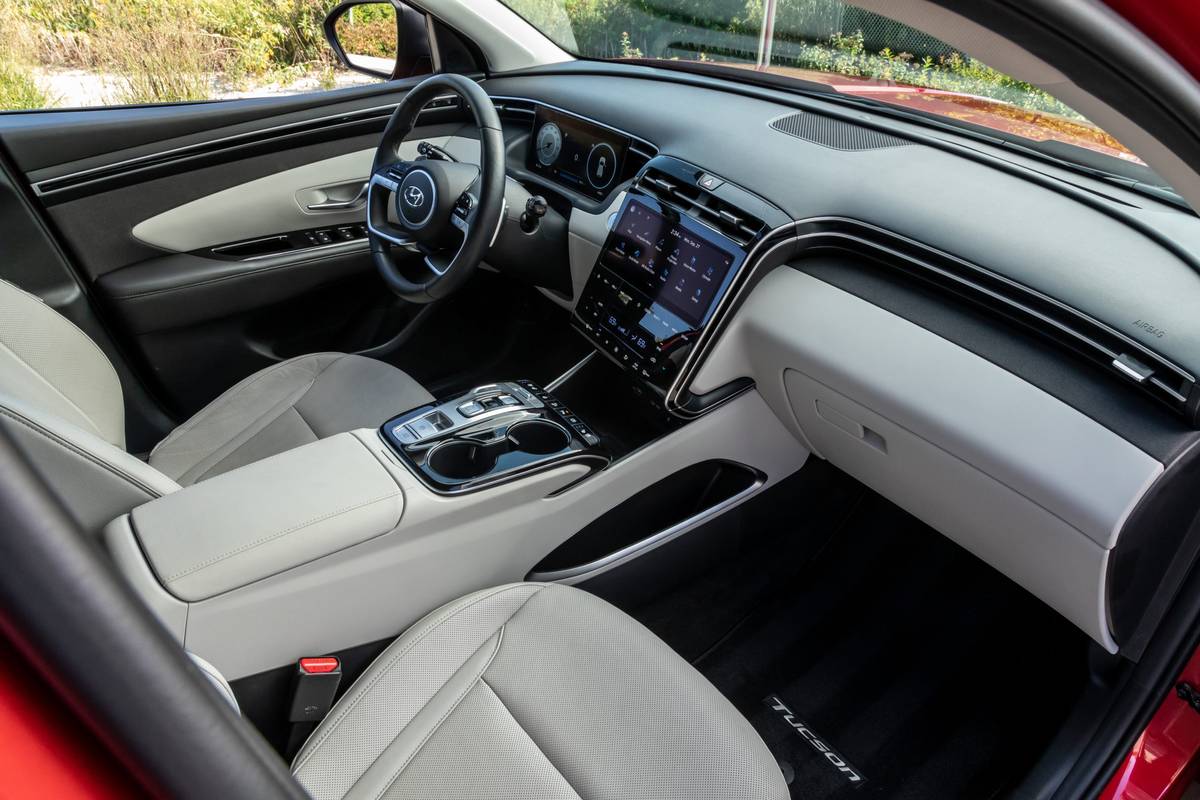







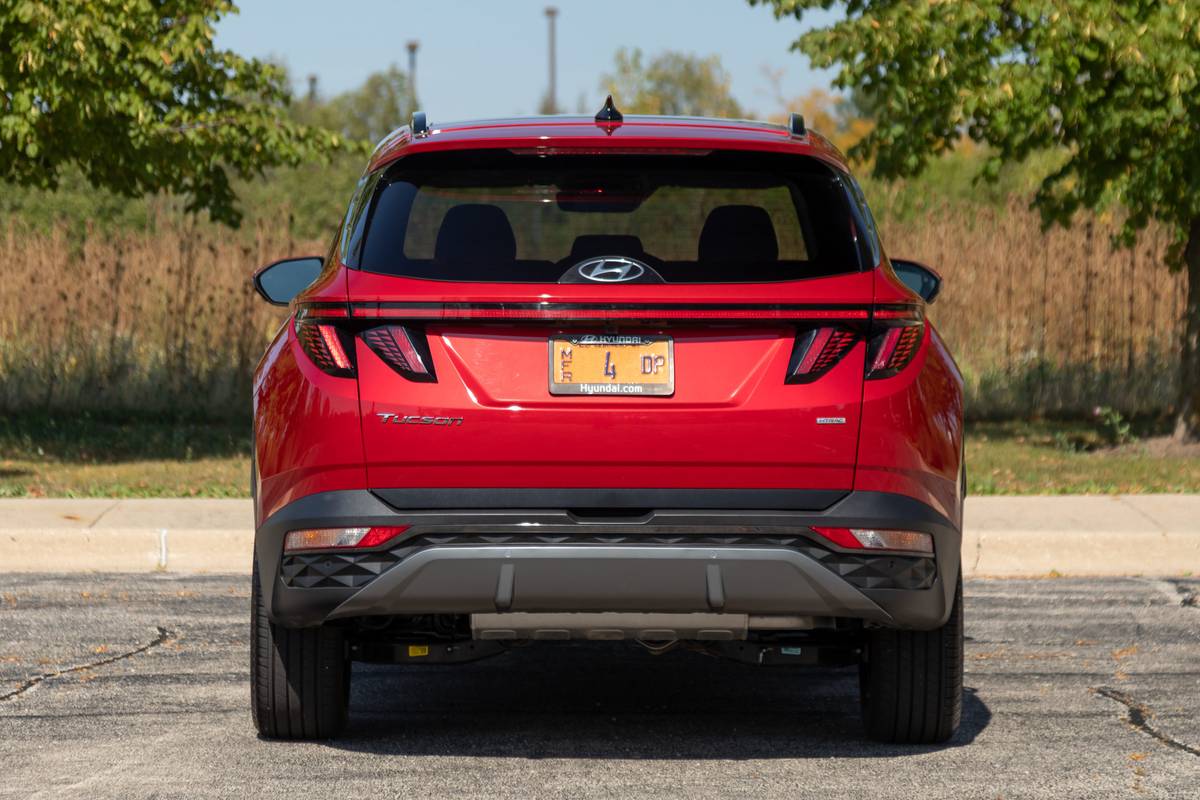


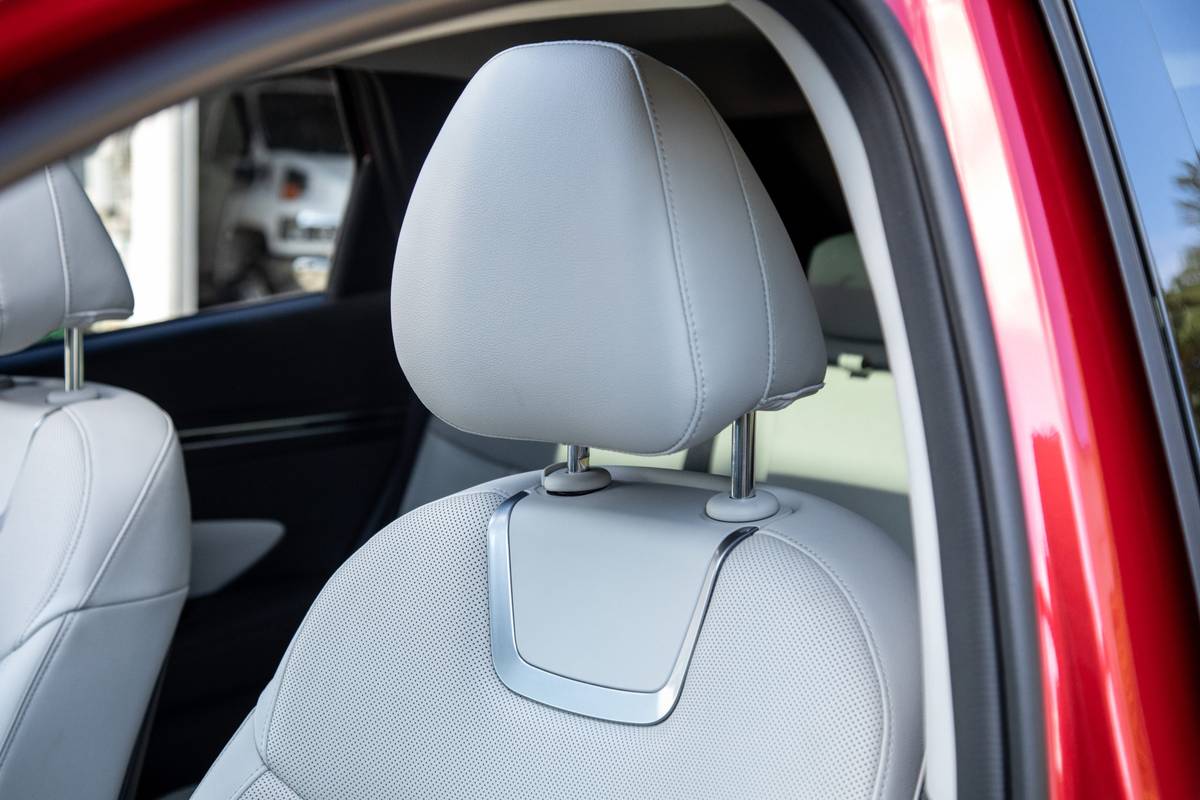
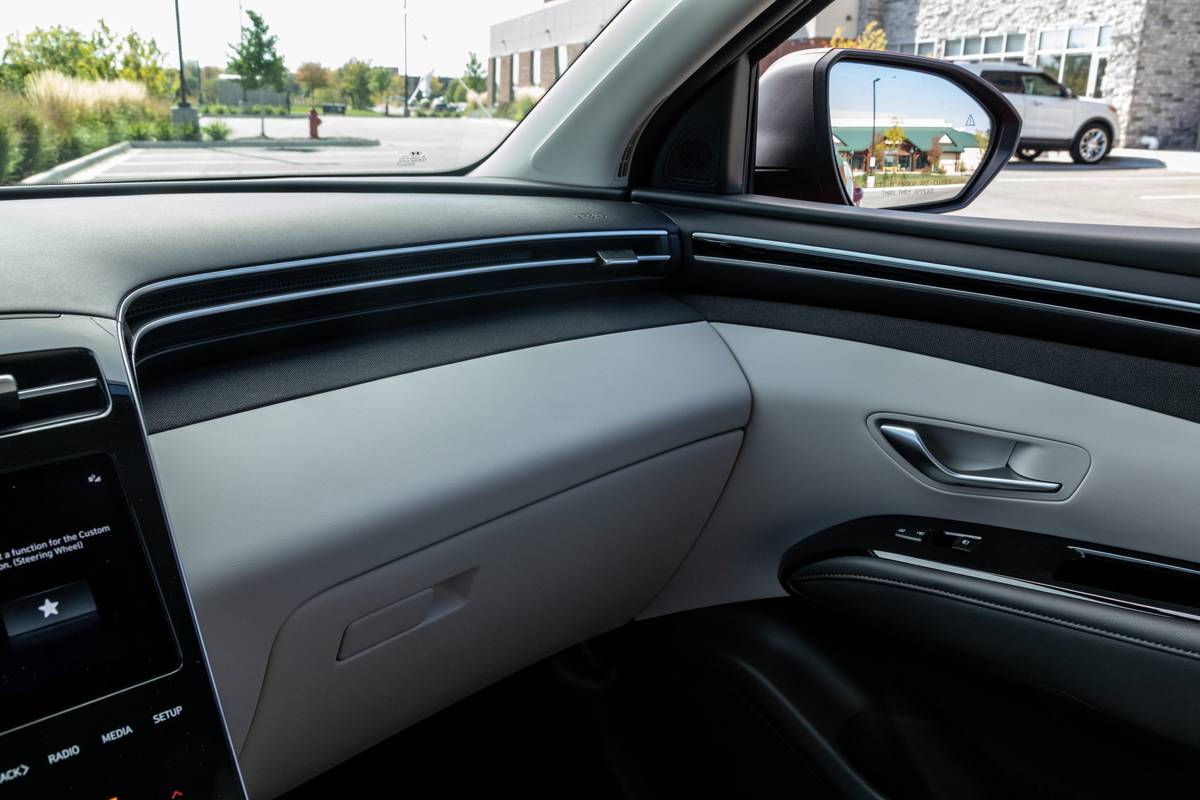



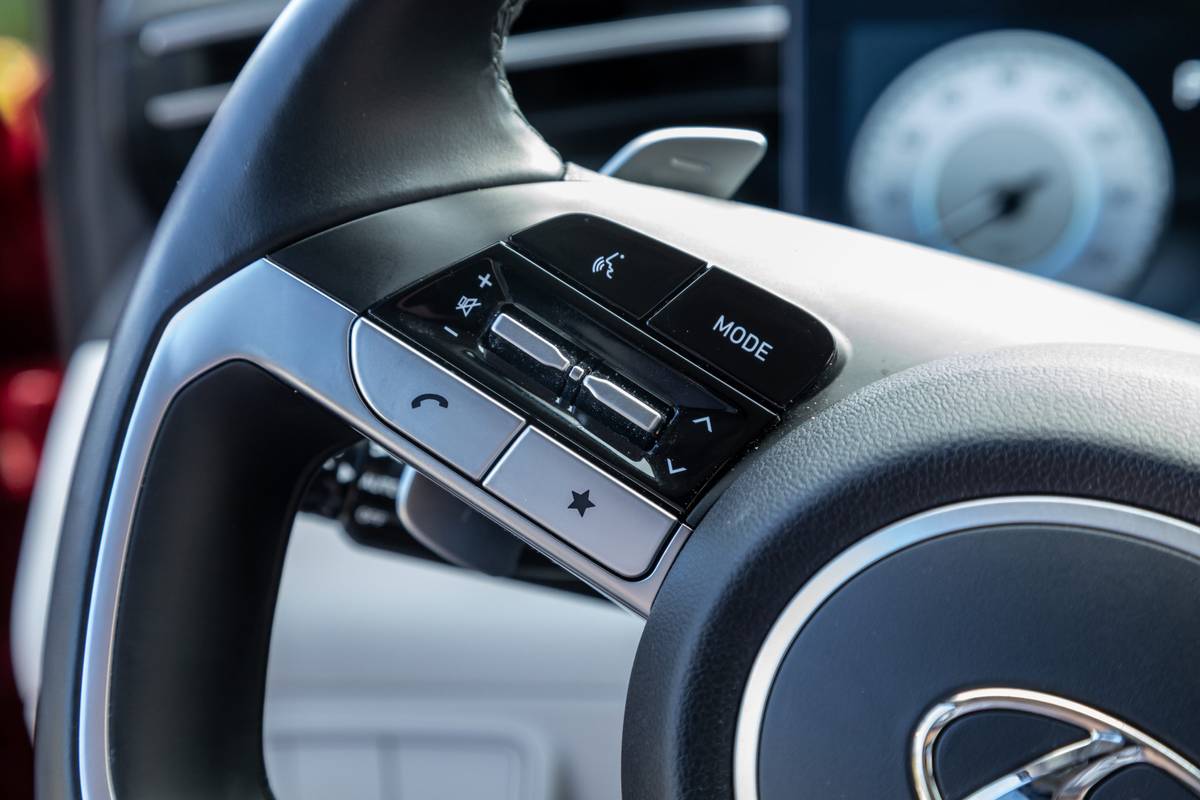





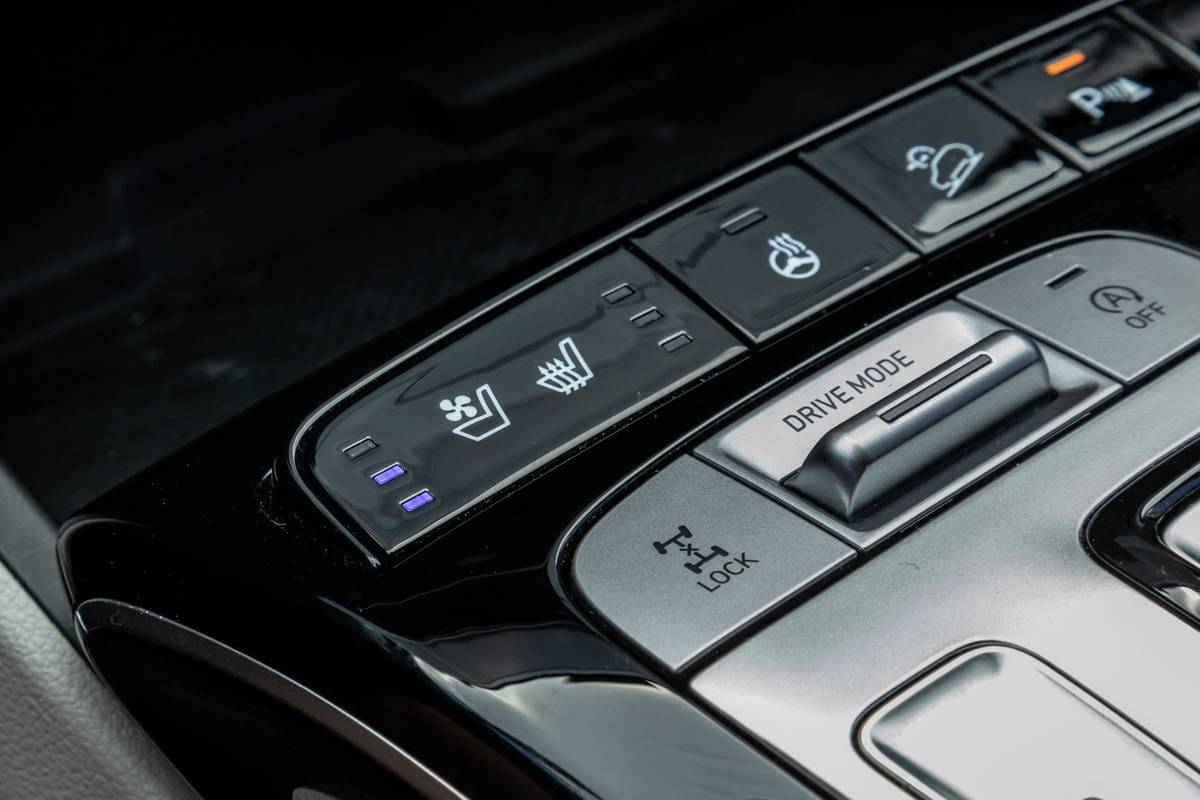






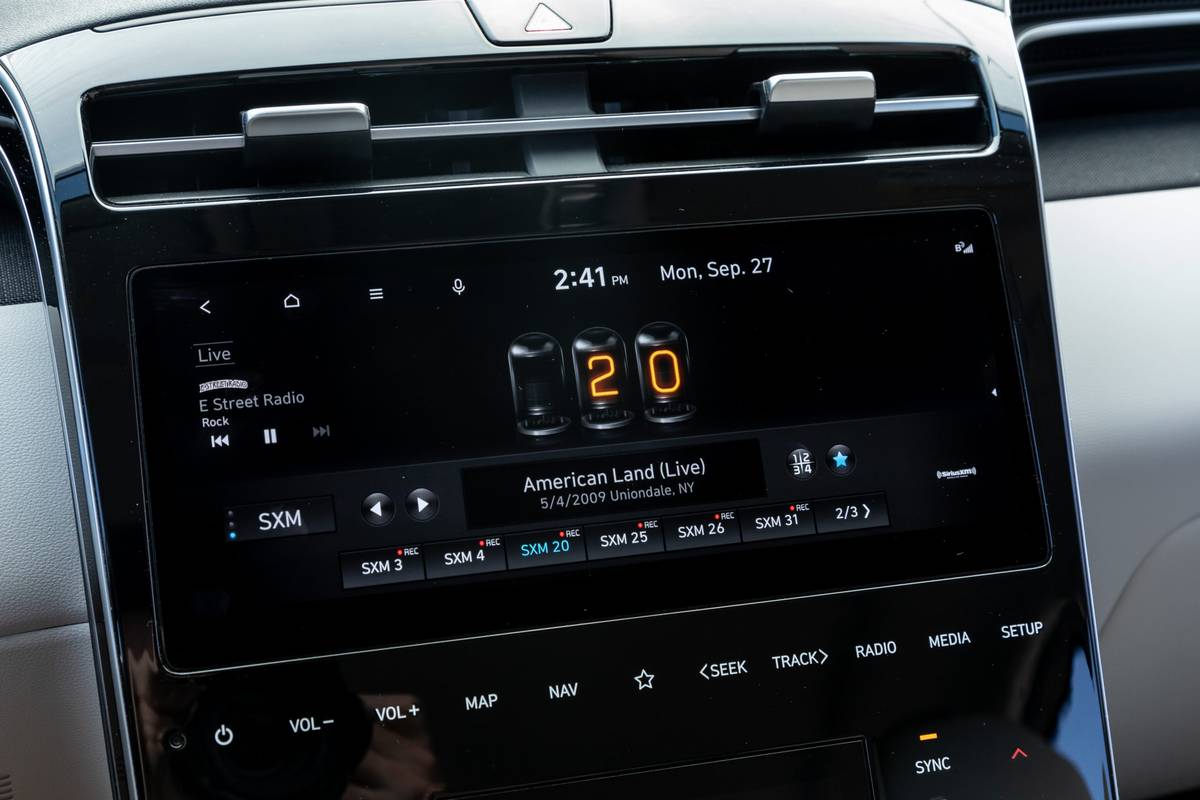





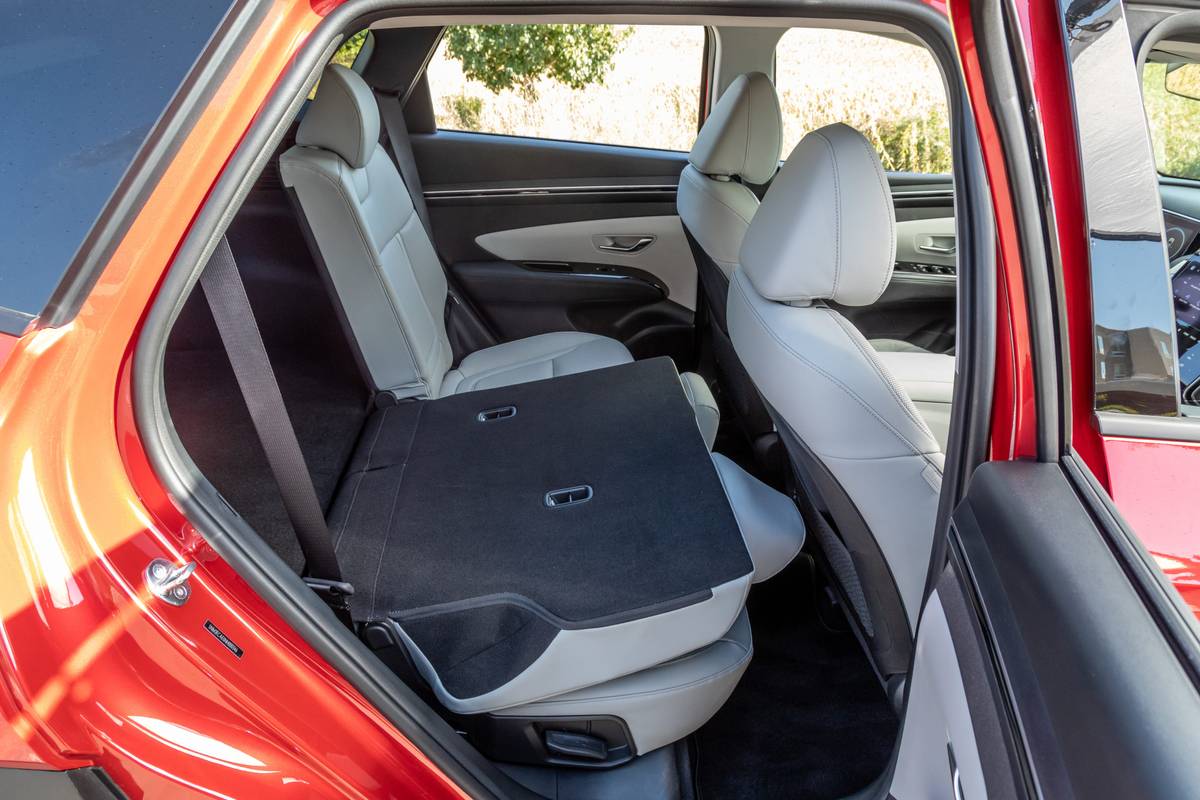




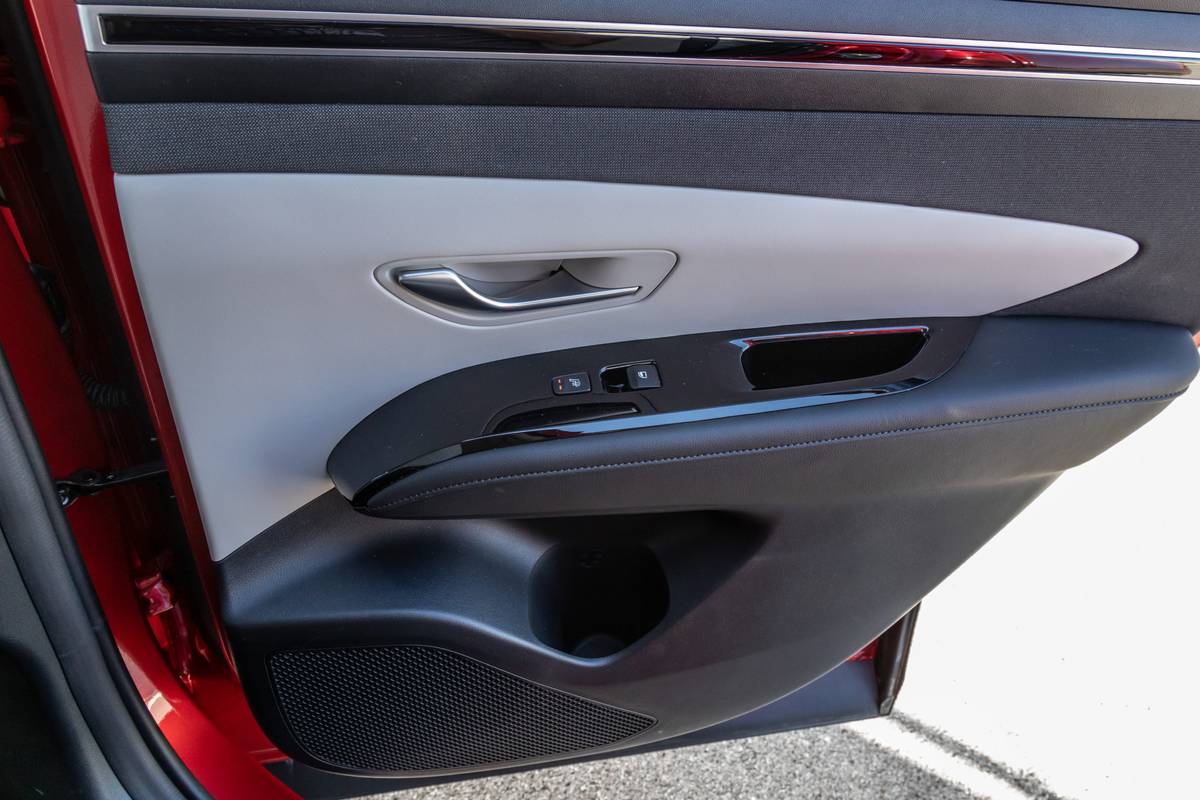































































Our Test Vehicle
As-tested price: $37,454
Powertrain: 187-hp, 2.5-liter four-cylinder; eight-speed automatic transmission; all-wheel drive
0-60 mph: 9.2 seconds, 4th place
0-10 mph: 0.88 second, 1st place
Estimated city/highway/combined mpg: 24/29/26
Redesigned for the 2022 model year, the Hyundai Tucson is very different from the model that took third place in 2019 (thanks to updates and a longtime Hyundai strength in these competitions: value). The 2022 also ranked first for value, but by only one point out of a possible 60, far from the broad margin we’re accustomed to. Encouraged, perhaps, by the wrongheaded adoption of touch-sensitive black panels courtesy luxury powerhouses Mercedes-Benz and Audi, Hyundai seems to be going all in on this control system. We’re not buying it — from anyone — and we predict a reversal (after many more years of waiting). The Tucson won three judging categories outright, tied for first with other models in four more and lost none to fall just four points behind the overall winner.
The Good
Noise: “The powertrain was a lot quieter than the rest of the challenge competitors,” Newman said. Bruzek added, “Perhaps one of the quieter non-luxury cars out there. Road and wind noise whisper through the car, and the only knock is that the engine is a bit wheezy at high rpm, but in this class of overworked four-cylinders, which one isn’t?”
Front seats: “The front seats are comfortable, with just-right bolstering, and they’re heated and cooled,” Newman said. Bruzek added, “They give equal adjustability to driver and passenger, which isn’t a given in this class. Also, though this was perhaps the strangest find out of all the vehicles, it had a super-plush head restraint. It’s more like a pillow than a safety device. This part is technically not a head ‘rest,’ but this cushioned head restraint would feel appropriate in a Mercedes S-Class.”
Ride quality: “The Tucson rides like a class above, feeling like a more substantial car than its competitors,” Bruzek said. “It’s sophisticated and well damped, absorbing large impacts with minimal intrusion to the cabin. Its medium firmness is comfortable but still provides some road feel.”
Child-seat fitment: The Tucson tied for first with straight A’s in our Car Seat Check, accommodating all of our child-safety seats without compromising front passenger space.
Interior quality: “The Tucson’s interior was probably my third favorite in the test, and given how nice the Forester and Rogue are inside, that praise isn’t as faint as it seems,” Normile said. Bruzek added, “What caught my eye is something we don’t actually score numerically: style. There’s no simulated wood or metal, but interesting fabric trim, controls and other features are integrated within the design, like memory seat buttons that follow the curvature of the dash design and vents that fit into the same aesthetic.”
Blind spot monitor: “I’m a big fan of Hyundai’s digital instrument panel with the side-camera views that display when the turn signal is engaged,” Newman said. “While it’s not exactly new anymore, it’s so well done that it deserves praise.” Dutifully, Normile agreed: “It remains one of my favorite safety features.”
The Bad
User interface: “I wish Hyundai hadn’t made the center controls mostly the touch-sensitive type,” Normile said. “But almost as annoying is the way that the buttons ahead of the push-button gear selector feel angled away from my eyes when I’m in the driver’s seat.” Newman had no love for the cap-touch buttons, either. “They’re problematic to use while in motion,” she said. “I was trying to adjust the climate while driving at no more than 10-15 mph, and I couldn’t do it without looking at the controls for too long. When I realized how far I’d traveled, I decided to stop futzing with it until I was at a stop sign and then make my fix.”
In-cabin storage: “The rear cupholders are on the small side, and the rear bottle holders couldn’t fit my 12-ounce water bottle,” Newman said. “While there are two seatback pockets, they’re a stretchy mesh, so smaller items will fall out or they’ll get stuck in the mesh.”
Visibility: “Natural visibility is lacking with a high beltline and short windows in the back compared with other competitors, though it’s balanced by a high-resolution 360-degree camera image for parking and blind spot cameras while in motion,” Bruzek noted. Newman added, “The rear seats are comfy, but the windowsill is so high, it hit me at my shoulder. This could limit outward visibility for kids in booster seats, or out of them, possibly leading to car sickness.”
Hard surfaces: Though the Tucson ranked above average for interior quality, all of the judges noticed conspicuous hardness. “The interior looks good, but I’d like more padding instead of hard plastic,” Newman said. Bruzek agreed: “While not bad, there isn’t the plushness and quality we’ve seen in higher-end Hyundai products. This is a very different design and quality direction than the more upscale Palisade and Santa Fe. On the plus side, the quality doesn’t fall off a cliff in the backseat like the Elantra sedan’s does.”
Transmission behavior: “My biggest beef with the Tucson is its transmission: It holds onto gears for far too long even in its Normal driving mode and seems to have a hard time picking the right one,” Normile said. “The way it held the revs past 4,000 rpm for so long before upshifting had me thinking it was a CVT at first.” Newman added: “While zipping through some curvy roads, the transmission seemed to hunt for the right gear — and it took a bit.” Bruzek also liked the quickest and top-ranked powertrain overall, but said, “I did note a strange hesitation during wide-open throttle that around 2,000 rpm in 1st gear would pause acceleration, then resume.”
Research the 2022 Hyundai Tucson | Search Inventory | Car Seat Check
1. 2021 Nissan Rogue Platinum, 387 points
The verdict: The Rogue impresses with a well-executed interior, modern amenities and driving manners that are inoffensive enough to let its other qualities shine.


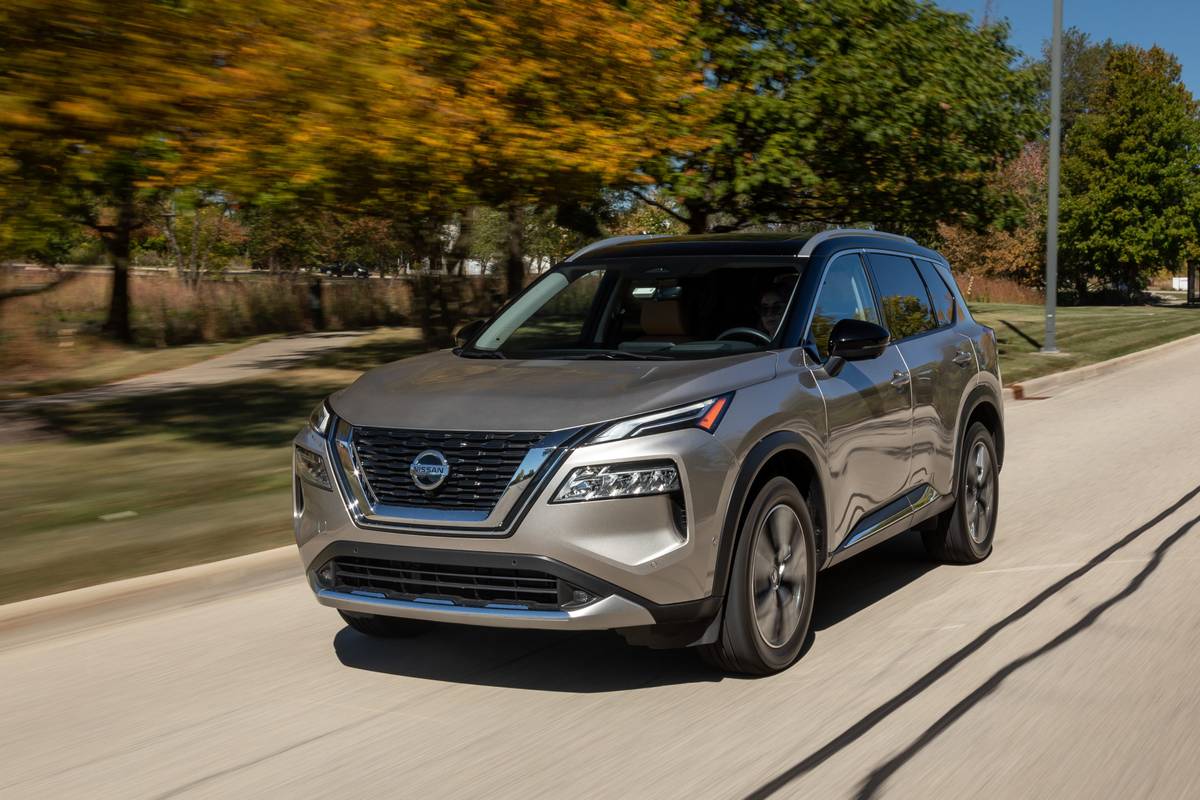
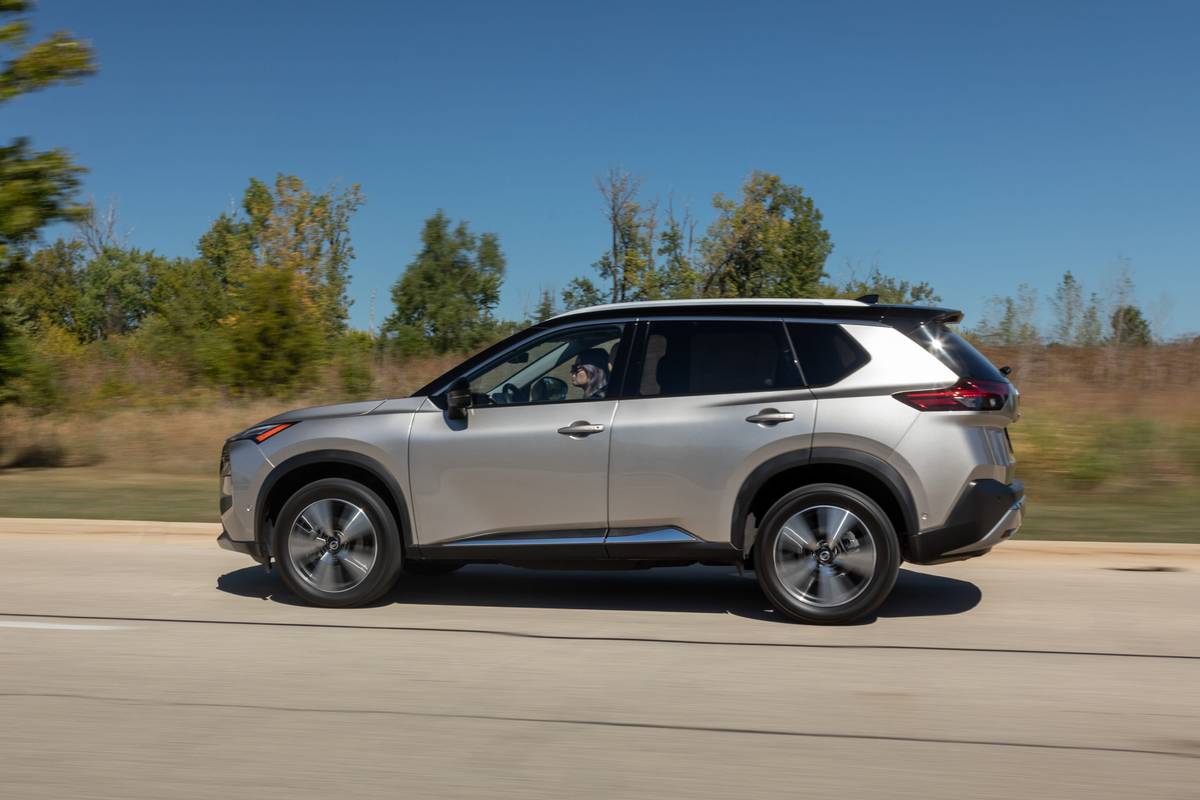



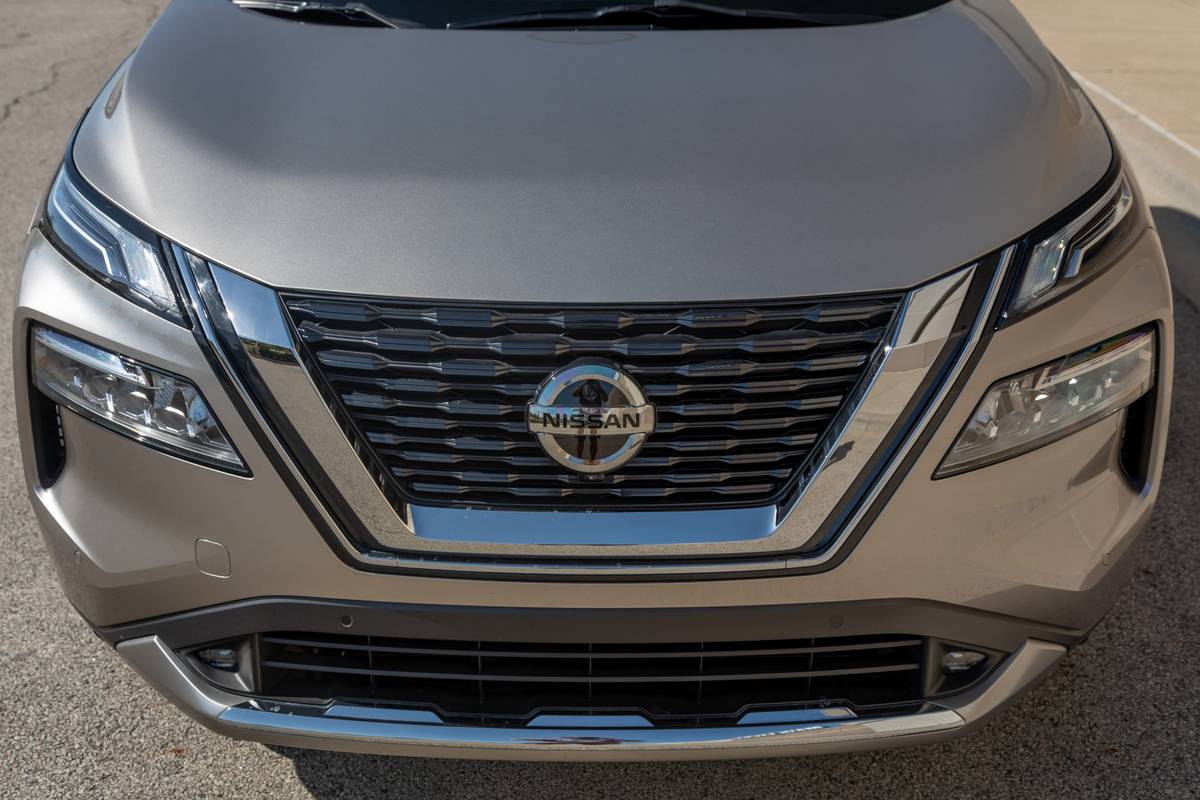

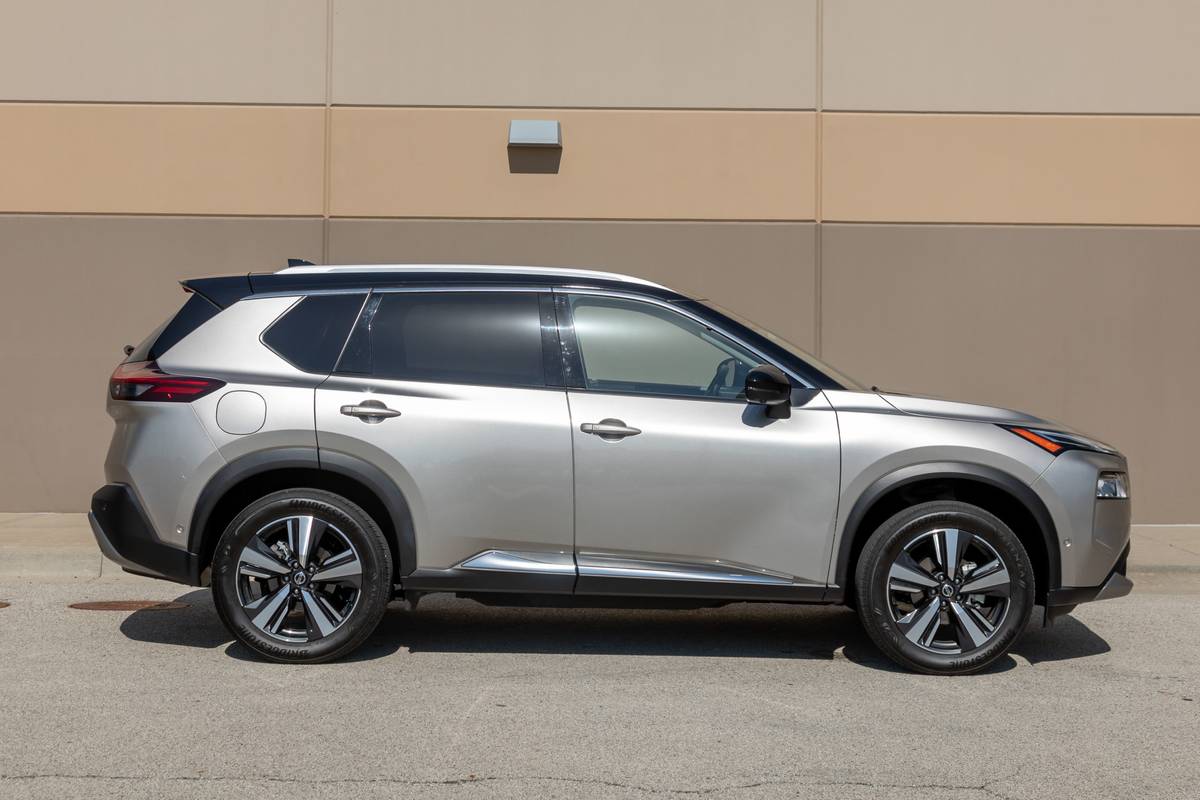










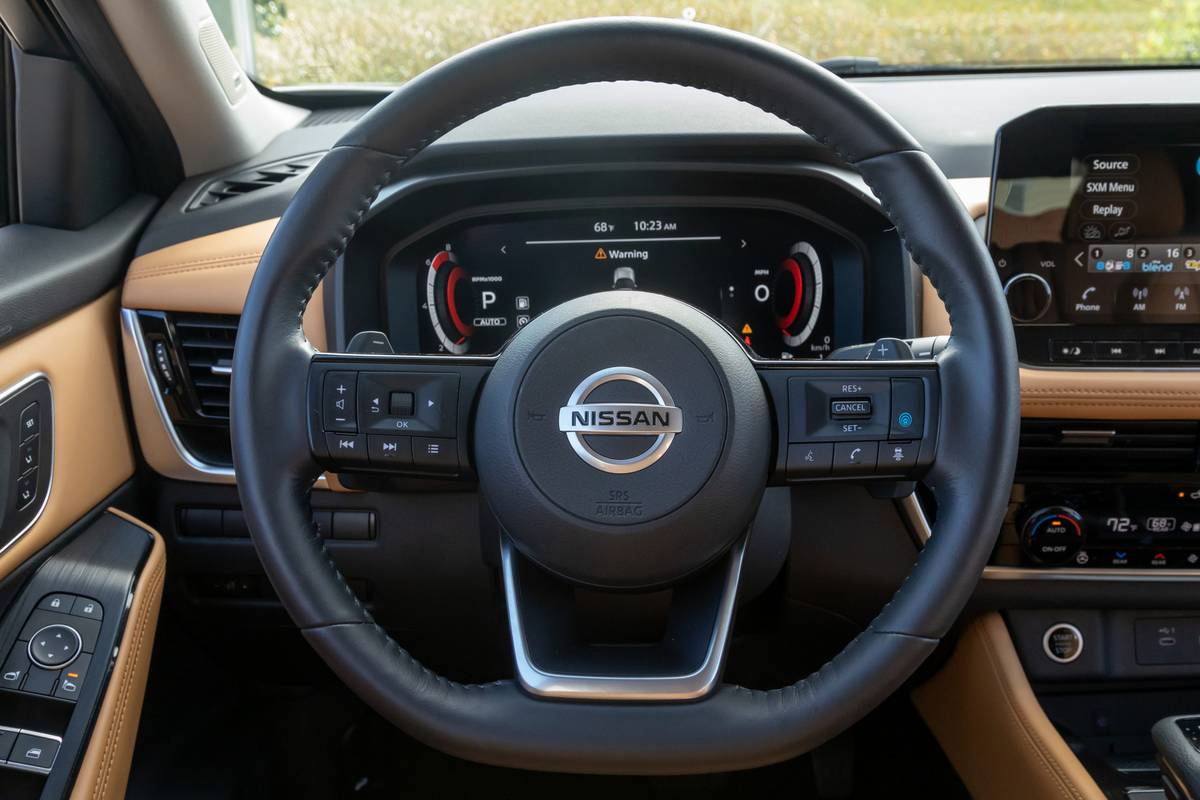


























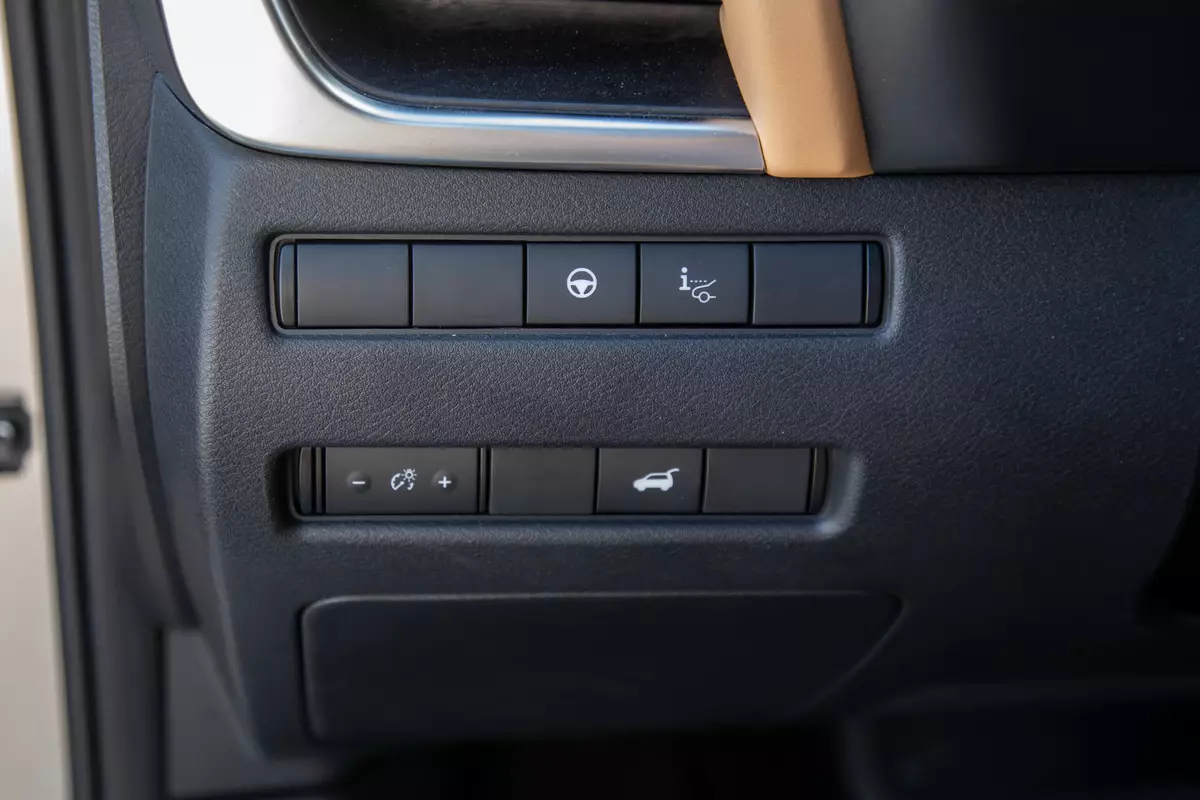


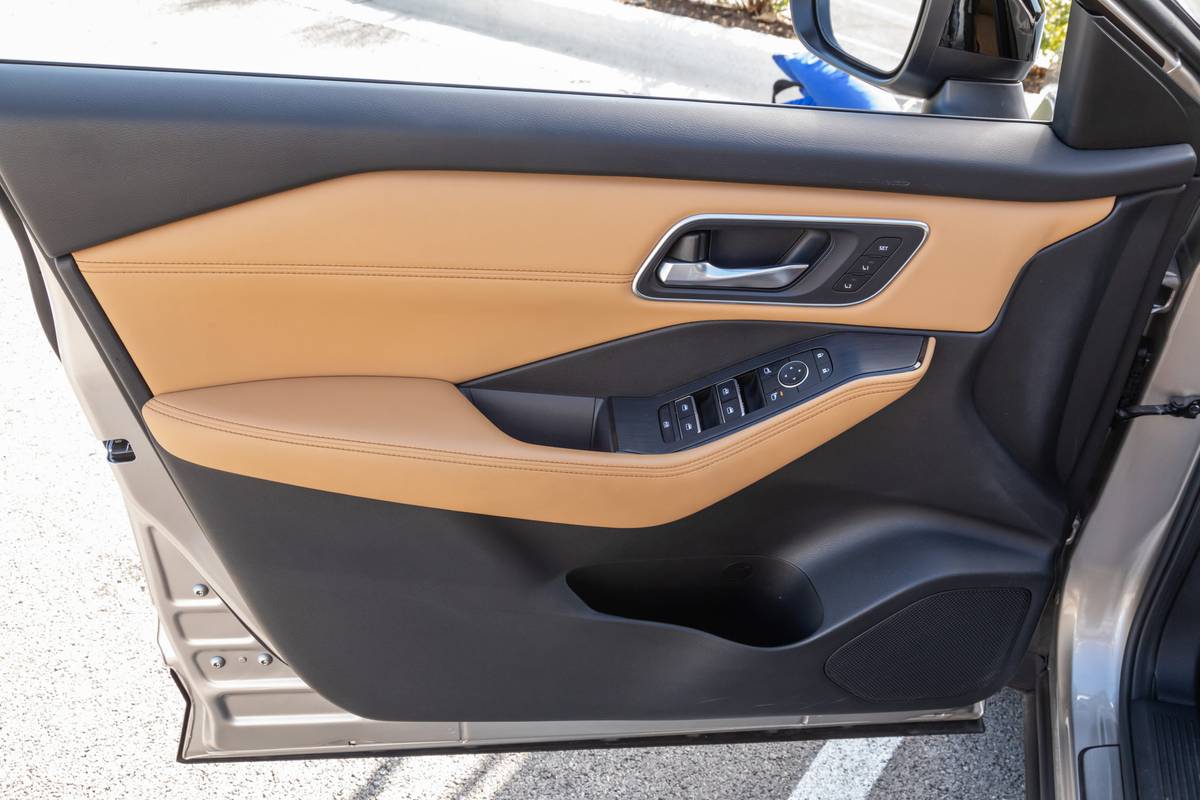




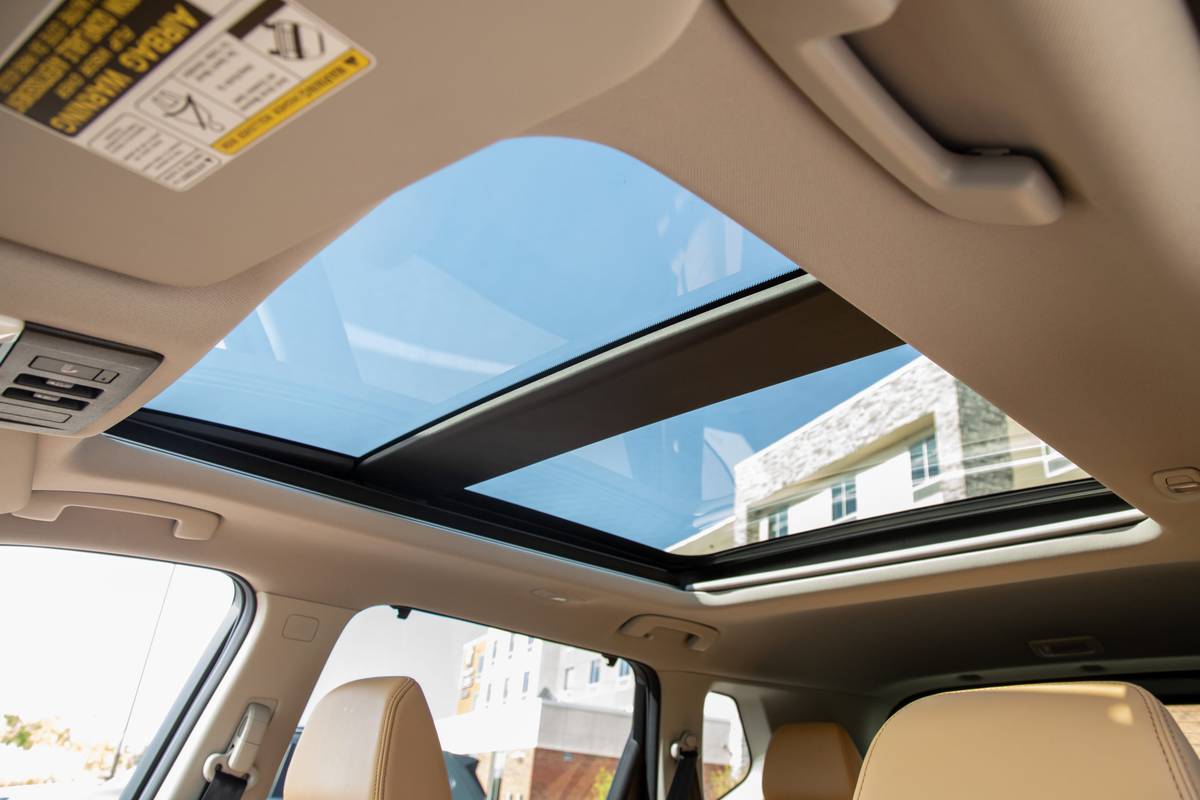


































































Our Test Vehicle
As-tested price: $39,685
Powertrain: 181-hp, 2.5-liter four-cylinder; continuously variable automatic transmission; all-wheel drive
0-60 mph: 8.5 seconds, 2nd place
0-10 mph: 0.93 second, 2nd place
Estimated city/highway/combined mpg: 25/32/28
Rogue won. The reason isn’t because it took first place in four judging categories, tied for first in two more and lost none. Technically, it won because it accumulated the most points — but as one of our judges (actually, all of them) put it, the Rogue won because it doesn’t do anything too stupid. In a class this competitive where any model would do the job, the most important thing for any automaker is to not shoot itself in the foot … or in compact SUV terms, not add a third row that subtracts more than it adds. Not ignore long-standing complaints about interior quality. Not fix what wasn’t broken. And for the love of every consumer, not believe that capacitive controls improve anything but short-term manufacturing costs at the expense of future quality scores and, in time, sales. The Rogue is a fine SUV and the beneficiary of competing companies’ bad decisions. We’ll give Nissan the tagline for free. “The Nissan Rogue: It doesn’t do anything stupid.”
The Good
Backseat: “The second row treats passengers like first-class citizens with rear sunshades, their own climate controls and heated seats,” Newman said. Bruzek added, “The backseat is flat versus some cars that have a center hump, so the middle seat is more usable for taller adults.”
User interface: “I’m a big fan of the 9-inch touchscreen and the 12-inch digital instrument panel’s graphics quality, finding them to be the best of the test,” Normile said. “The configurability of the instrument panel’s appearance is also a nice touch, though certain views deprioritize the speedometer and tachometer.” Newman added, “Physical buttons that duplicate the main menu mean I didn’t need to dig deep to use it. Also, the Rogue is the only SUV in this test with a head-up display. I’m a huge fan because it allows the driver to keep their eyes on the road while still getting needed info.” Bruzek enthused: “And you can see it through polarized sunglasses! Also, the Rogue has a unique gear selector but doesn’t take any getting used to.”
In-cabin storage: “Finally a place to put my purse!” Newman said. “The Rogue has a giant storage area/pass-through that would be great for stashing a purse, papers or other items.”
Plentiful charging options: “Charging options galore!” Normile said. “The Rogue’s use of USB-A and -C ports, along with a wireless charging pad, means there’s a port for every phone. (That’s how the saying goes, right?)”
Interior quality: “The Rogue copies its expensive luxury brand sibling, Infiniti, with diamond-quilted leather seats and door panels,” Newman said. “And there’s lots of padding at the touchpoints.” Normile agreed, with qualifications: “Far and away the nicest interior in the test; my only knock is the abundance of plastic on the door panels.” Bruzek echoed both: “There’s no doubt that the Rogue’s interior at this top Platinum trim level reaches into the next-size-up class of vehicles, though at nearly $40,000, it’s also in that price bracket. It doesn’t get the top score, in my opinion, because while the materials are nice, the buttons and gear selector are rickety and sloppy.”
Acceleration: The Rogue was the second quickest in the sprint to 60 mph at 8.5 seconds.
The Bad
Ride quality: It happens. The judges didn’t agree on why, but they agreed they didn’t love the Rogue’s ride quality. “Like the Outlander, the Rogue’s ride is overly firm for no real reason,” Normile said. Bruzek agreed … with the comparison. “Like the Outlander, its ride firmness is on the softer side, but you can feel the suspension struggle to keep big impacts from shooting through the car,” he said. “The body is not well controlled over bumps.”
Below-average cargo: The Rogue was in the lower half for measured cargo volume at 19.3 cubic feet behind the backseat, and it lost versatility points because the seat doesn’t slide like the Outlander’s and Tiguan’s do.
Average child-seat fitment: Though it had only one B grade among A’s in the Car Seat Check, among these competitors, that’s average. A tether anchor buried in the seatback’s upholstery was the problem — one we’d rather not see in a newly redesigned model, even if it improves overall on its predecessor.
Average front seats: “The front seats have good-sized bolsters, but the interior section seemed rather flat, which could be more of an issue for the front passenger who doesn’t have lumbar support,” Newman said.
Average value: “I never expected a Rogue to be the most expensive vehicle in a comparison test, but here we are,” Normile said. “The interior quality is worth it, but a nearly $40,000 Rogue feels like a tough ask, especially with one-touch windows for the driver only — when all the Outlander’s are one-touch. That’s weird, right?”
Research the 2021 Nissan Rogue | Search Inventory | Car Seat Check
Related Video:
Cars.com’s Editorial department is your source for automotive news and reviews. In line with Cars.com’s long-standing ethics policy, editors and reviewers don’t accept gifts or free trips from automakers. The Editorial department is independent of Cars.com’s advertising, sales and sponsored content departments.

Former Executive Editor Joe Wiesenfelder, a Cars.com launch veteran, led the car evaluation effort. He owns a 1984 Mercedes 300D and a 2002 Mazda Miata SE.
Featured stories


























































